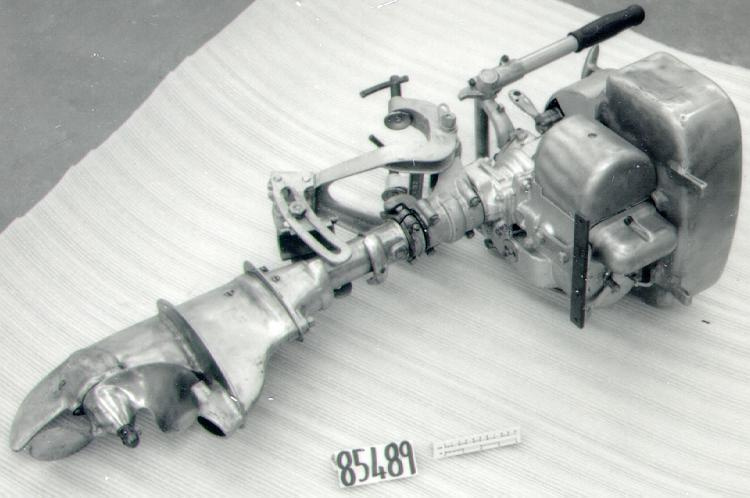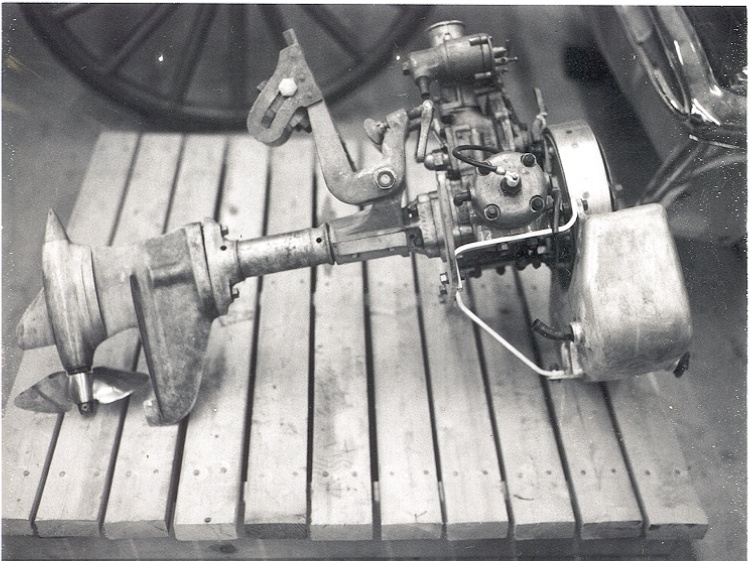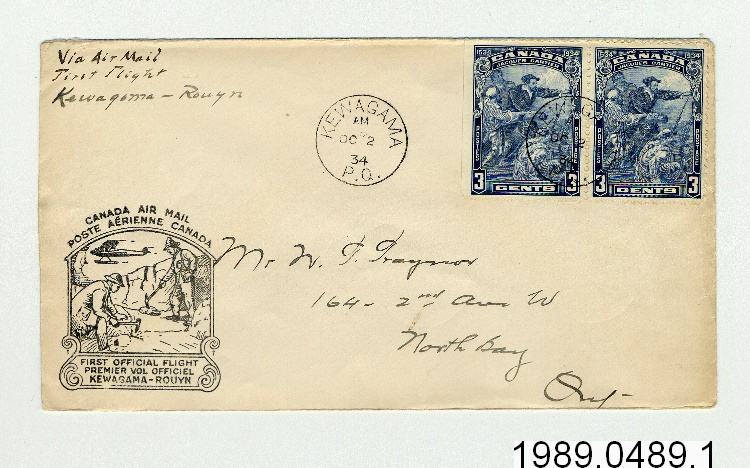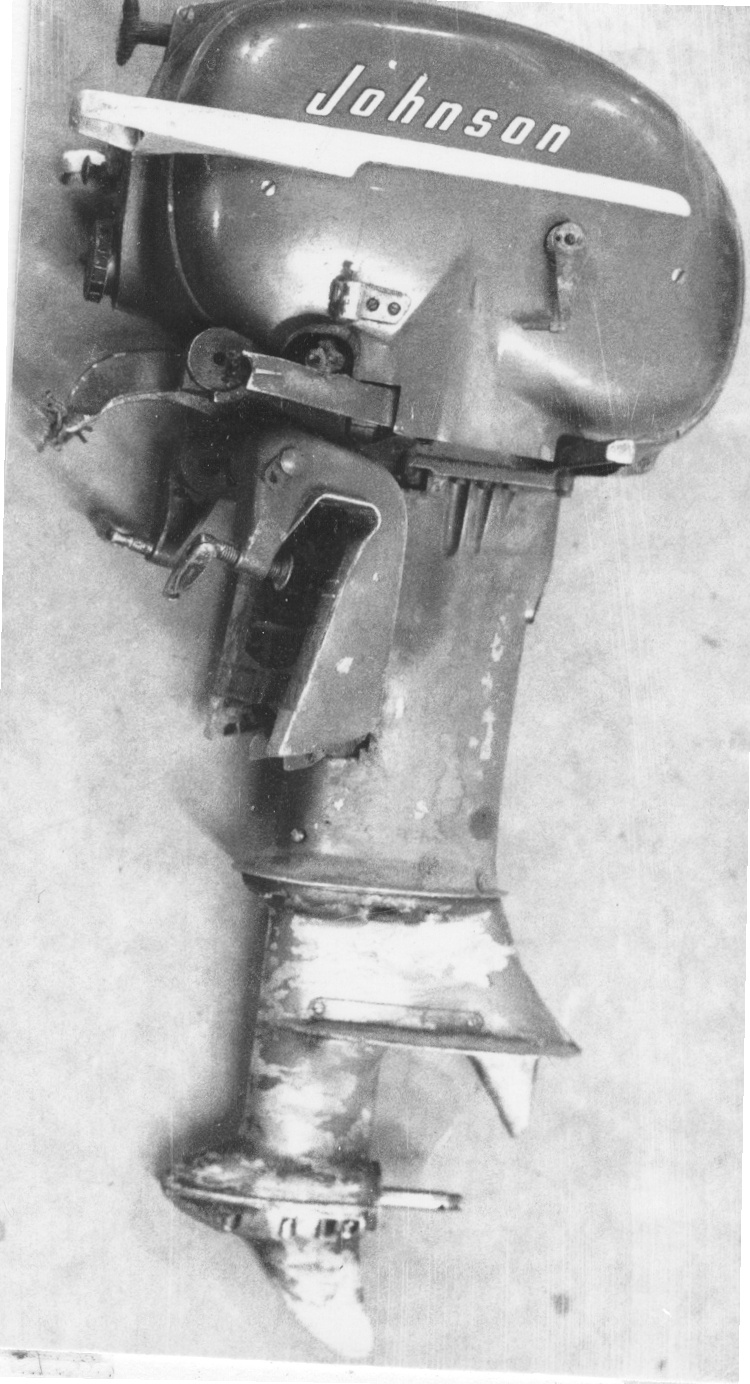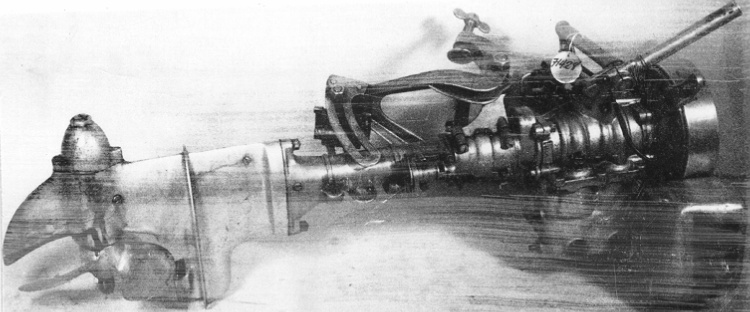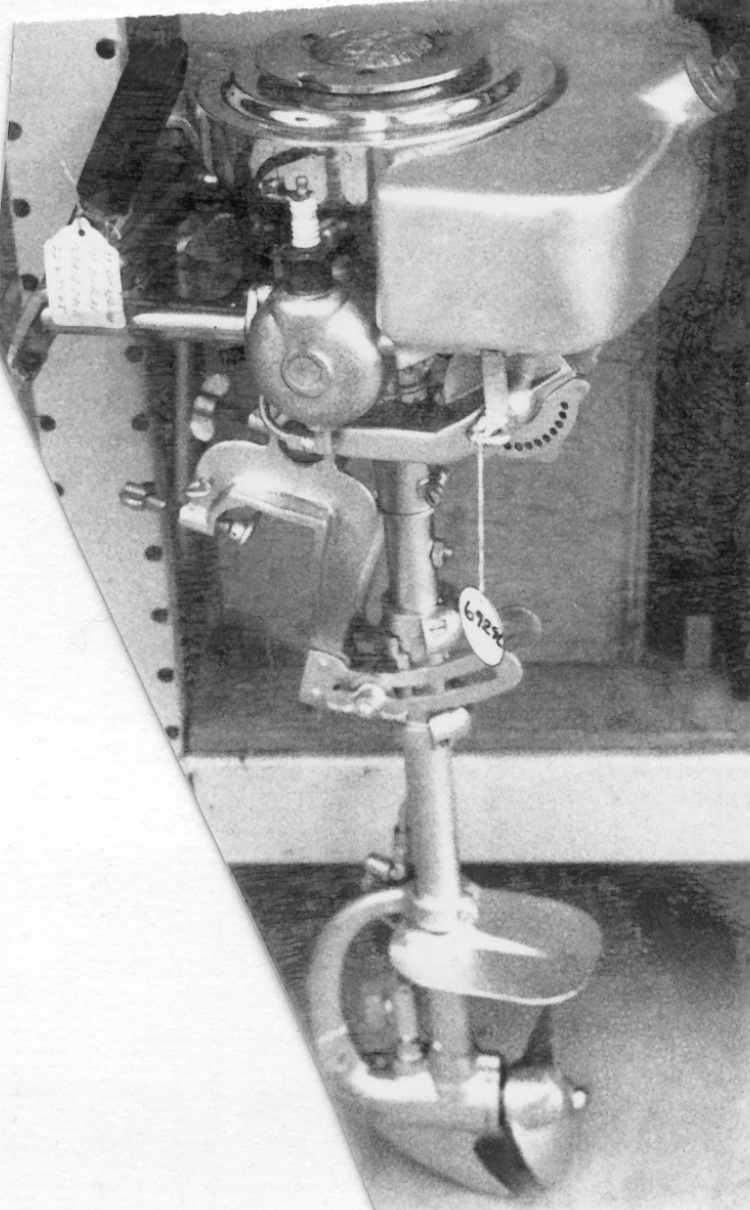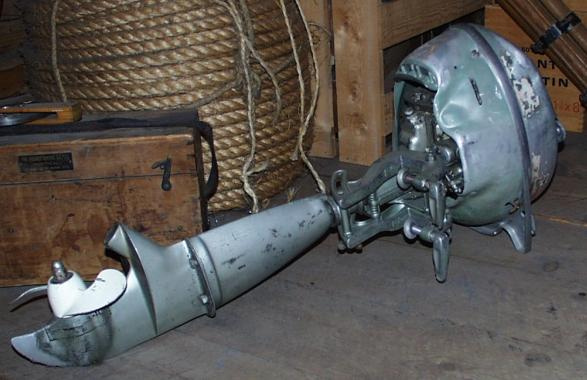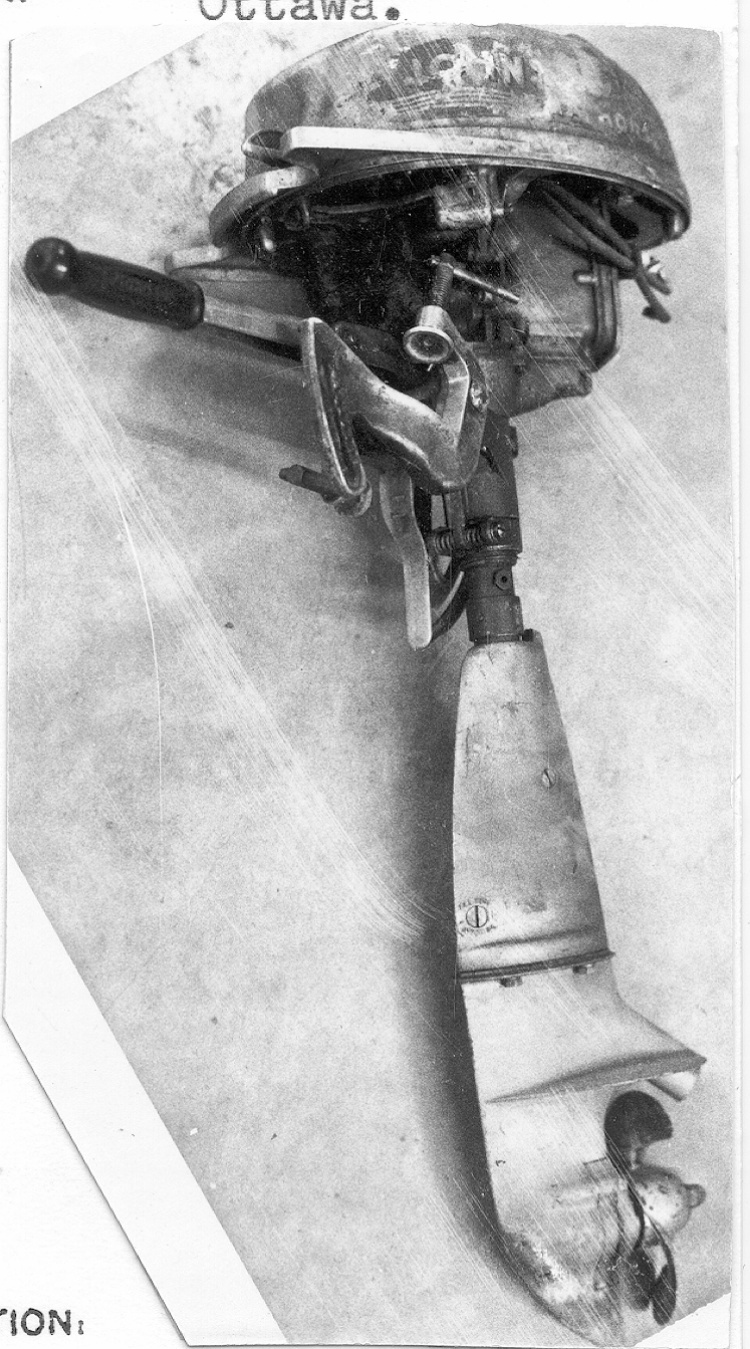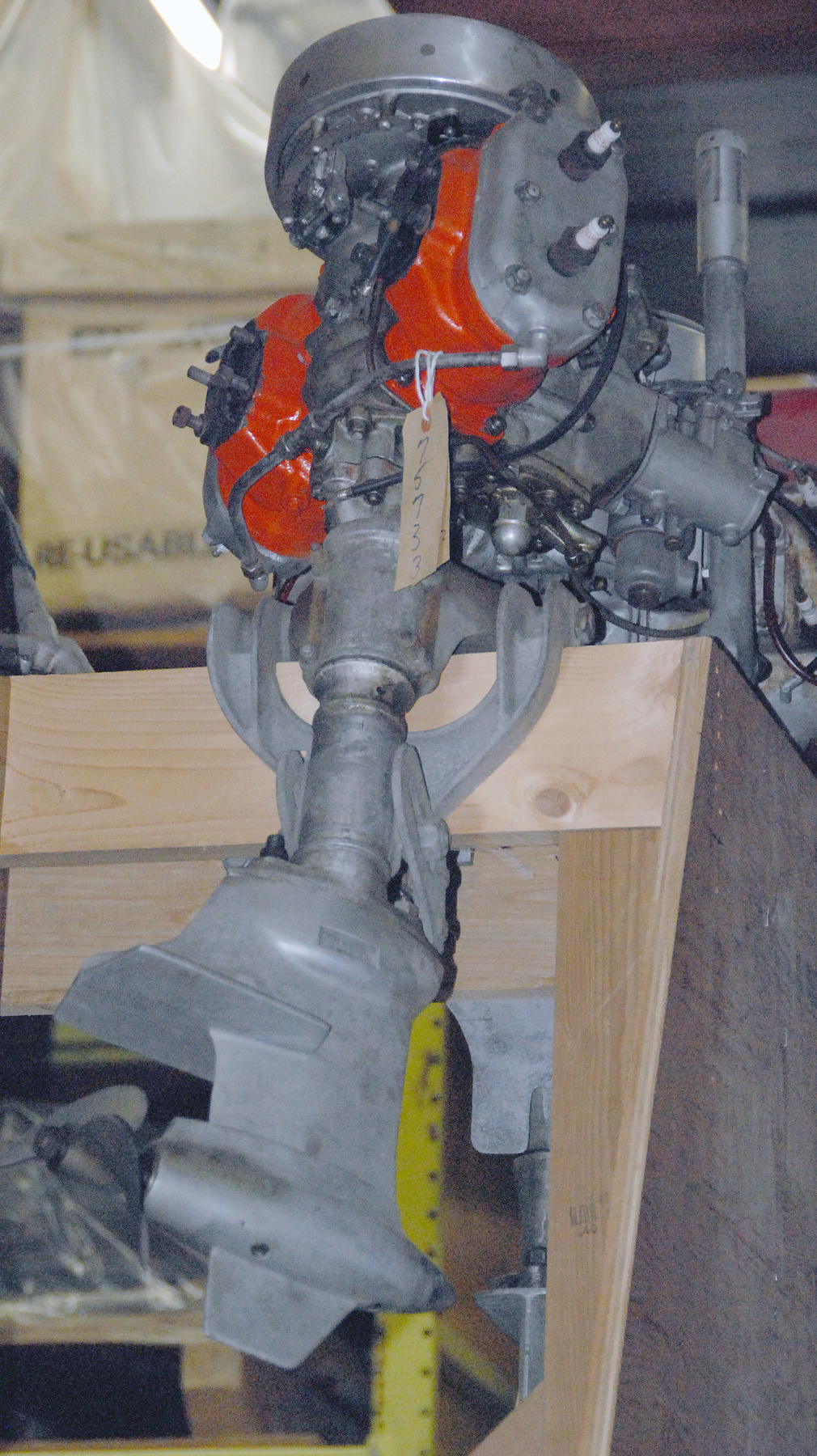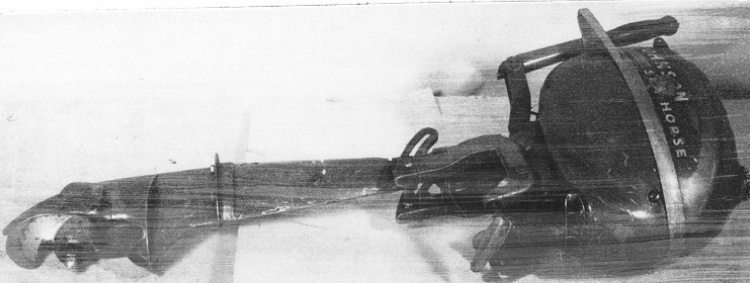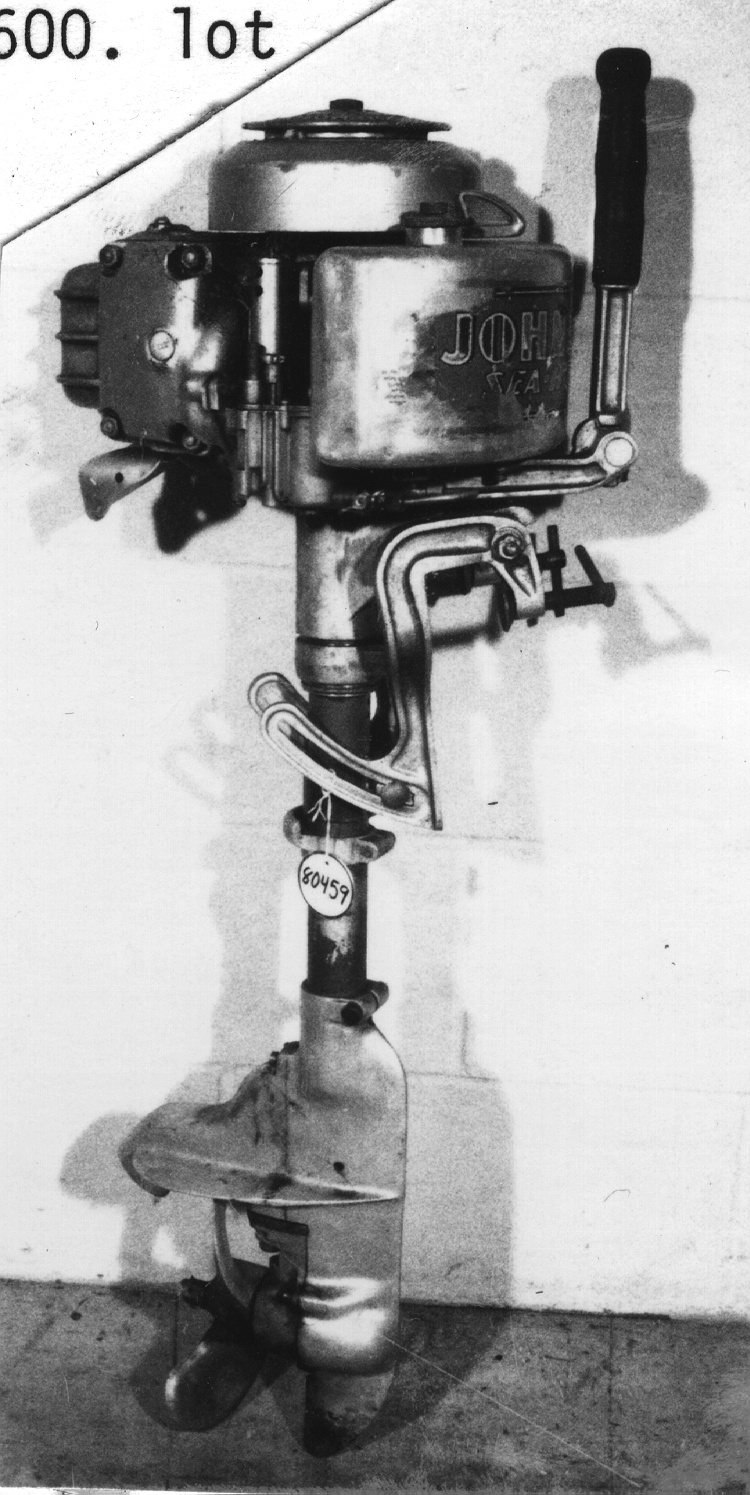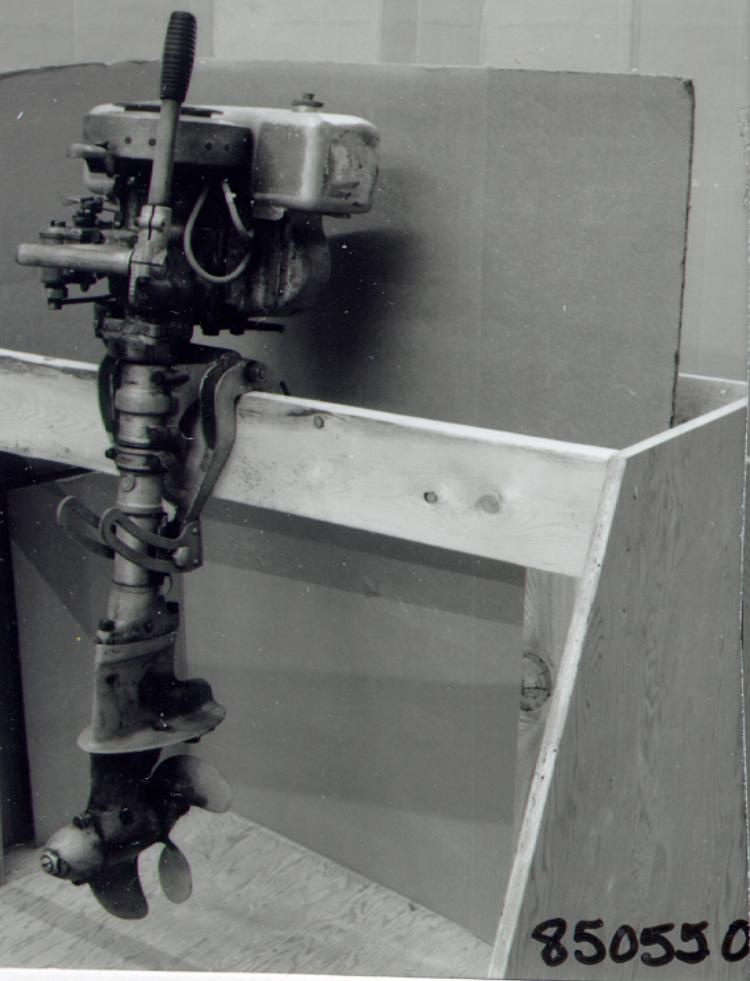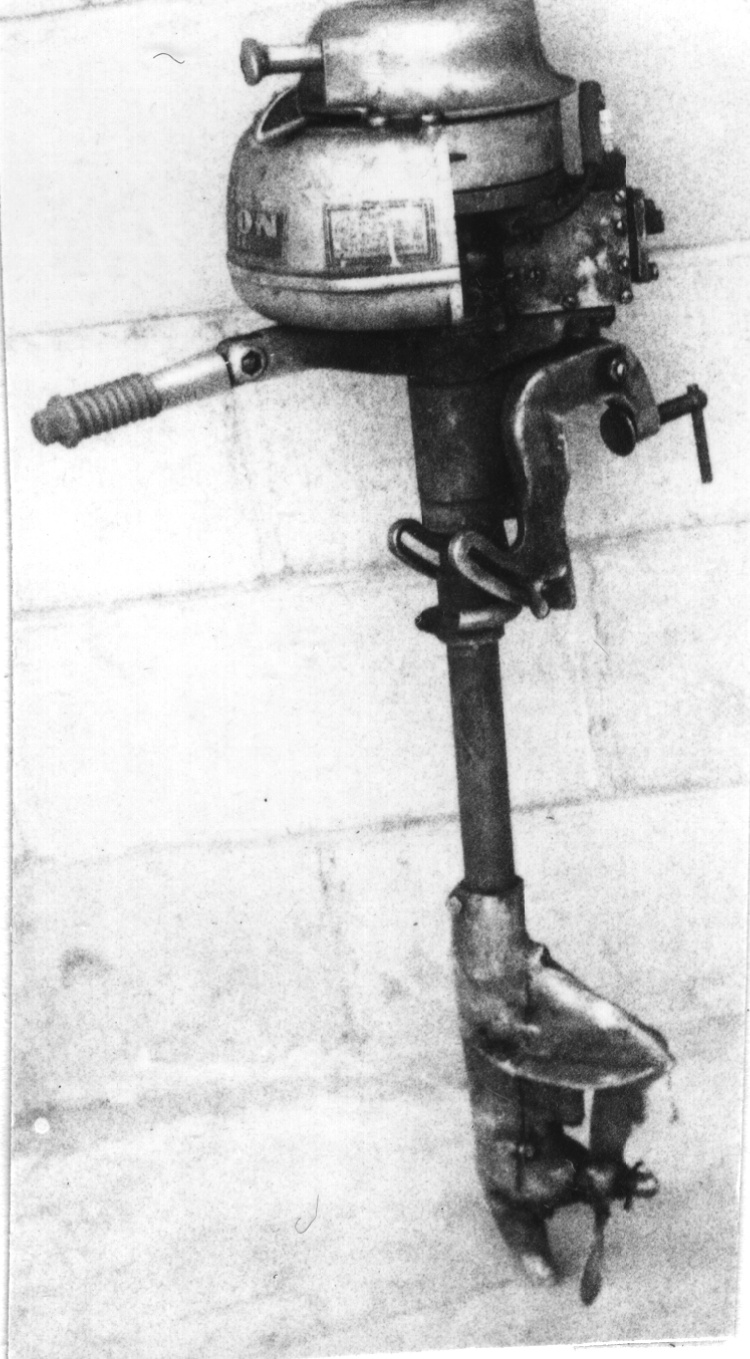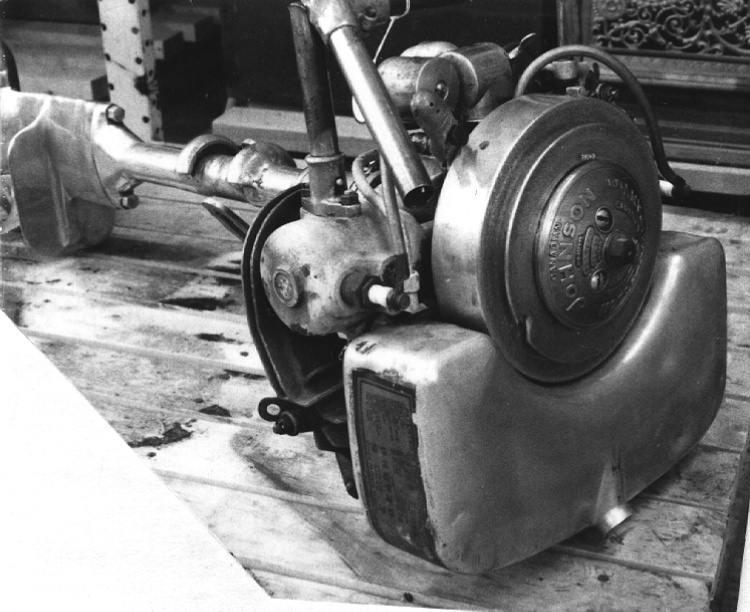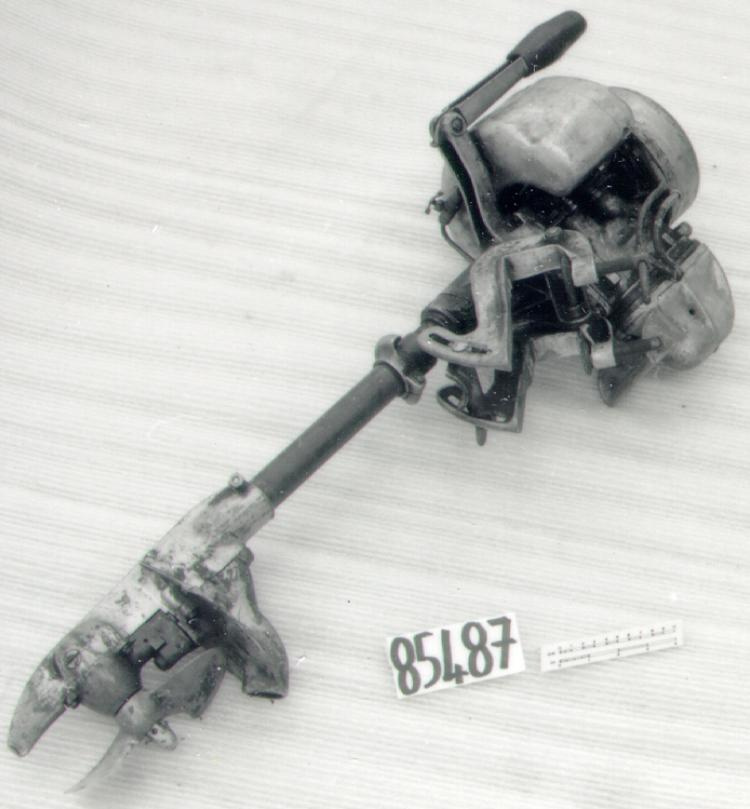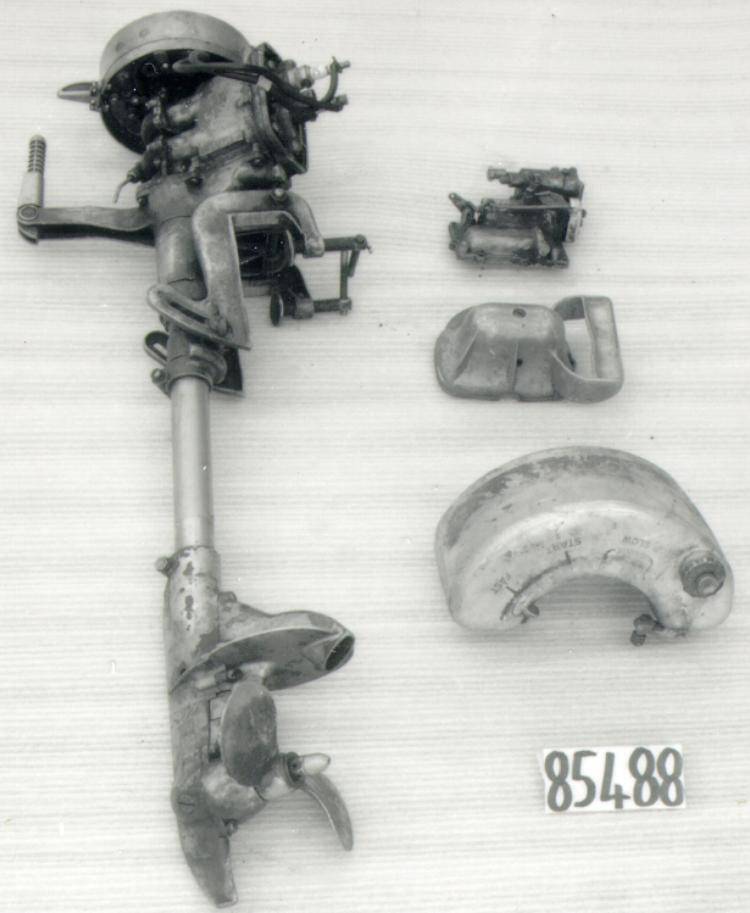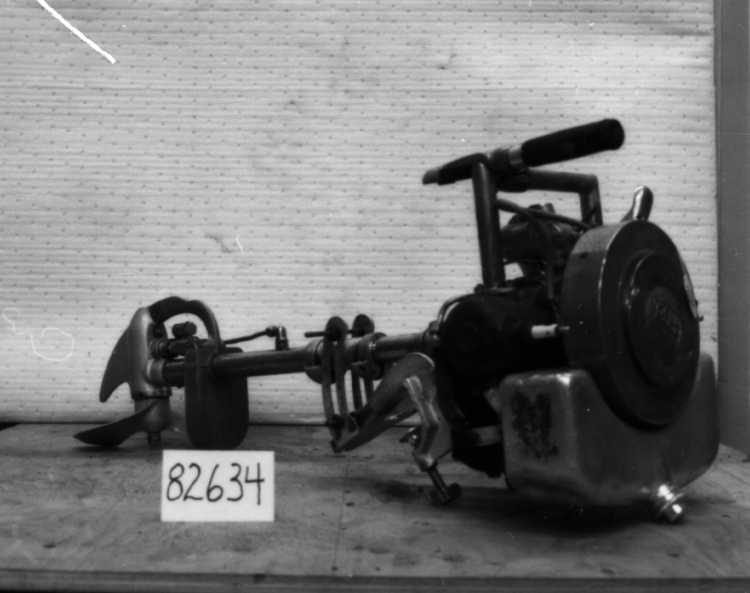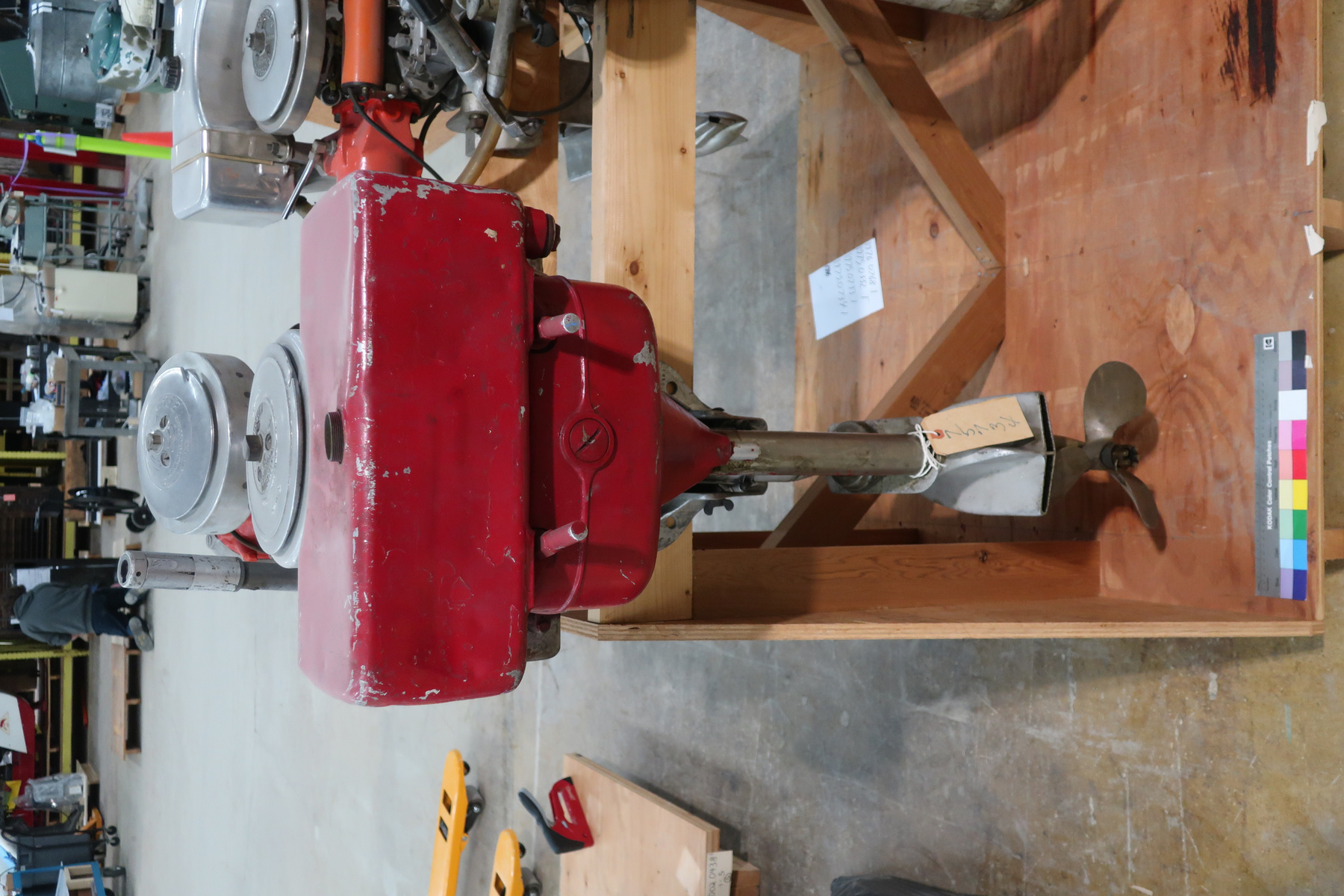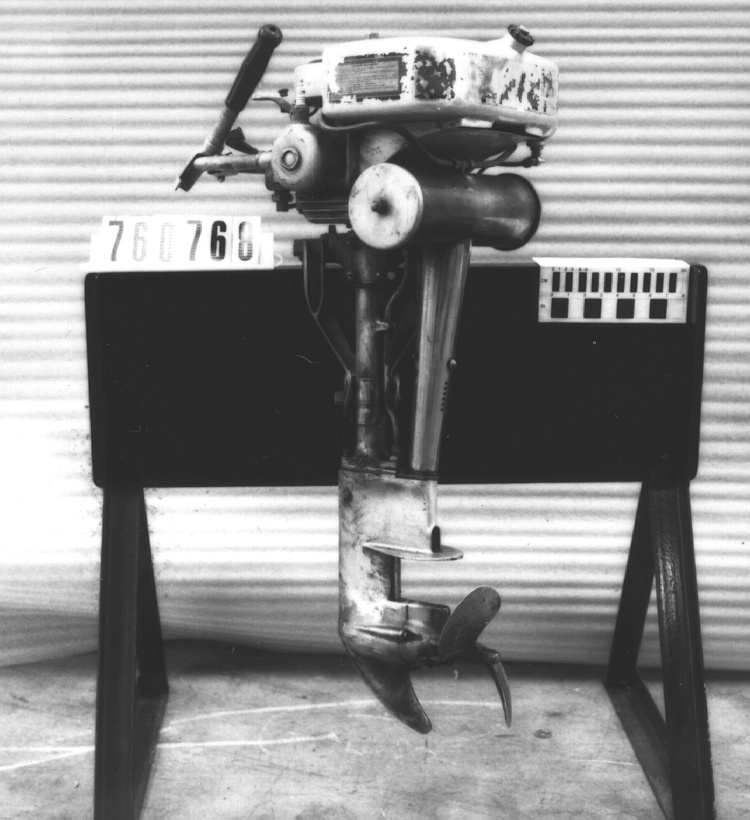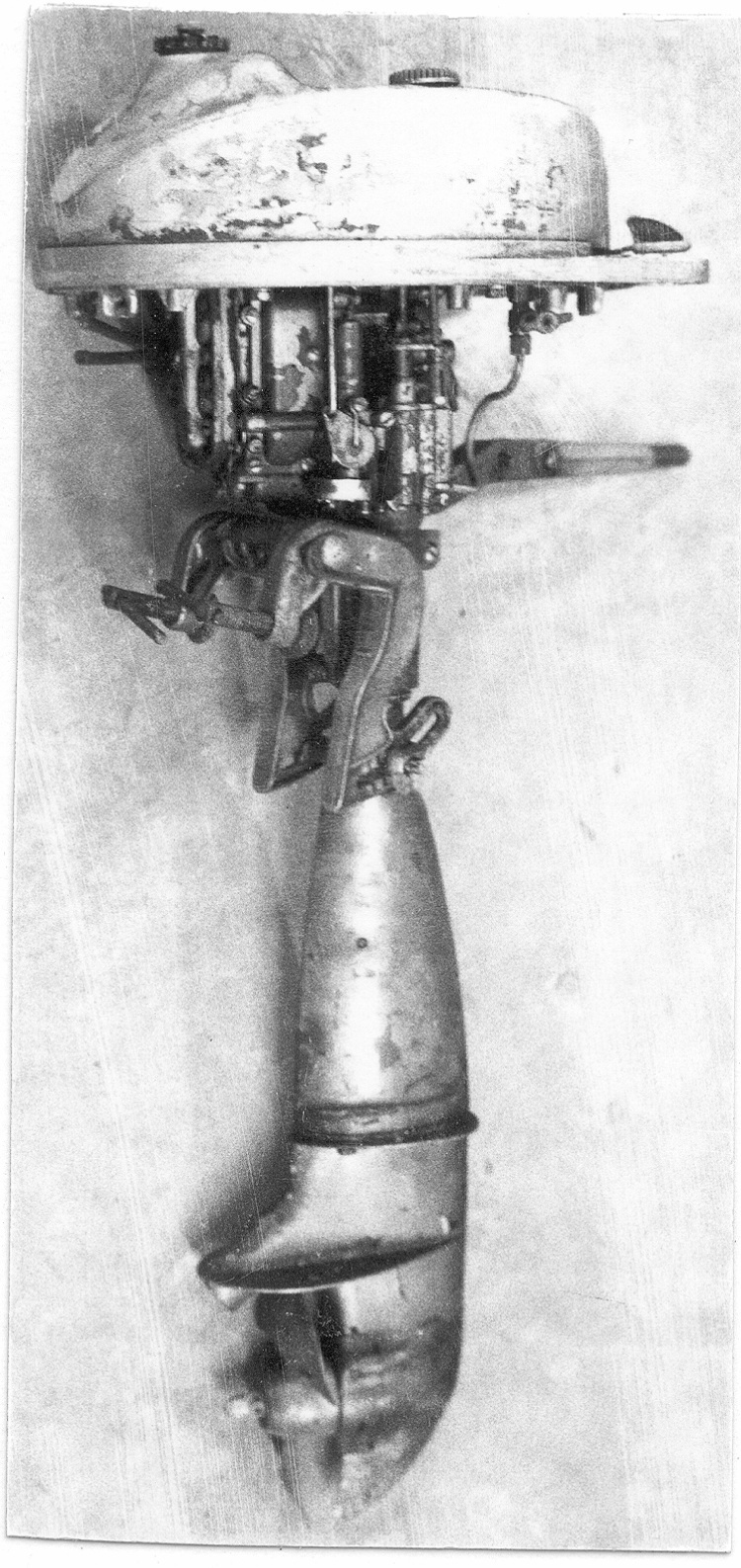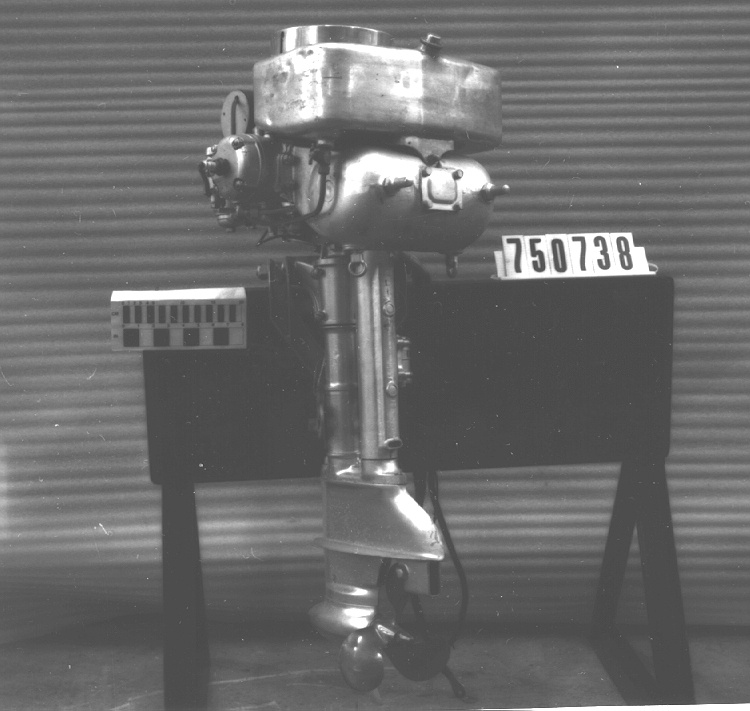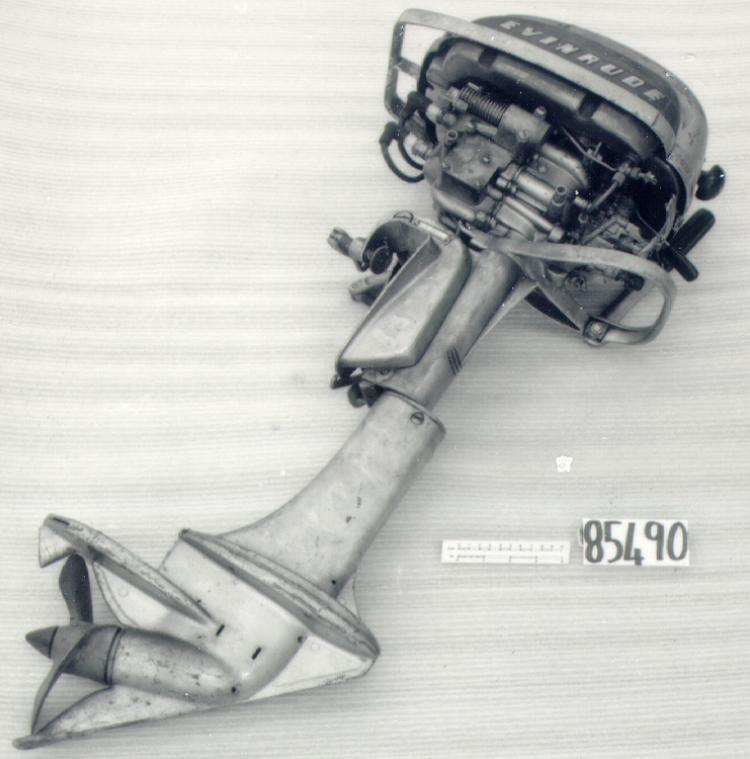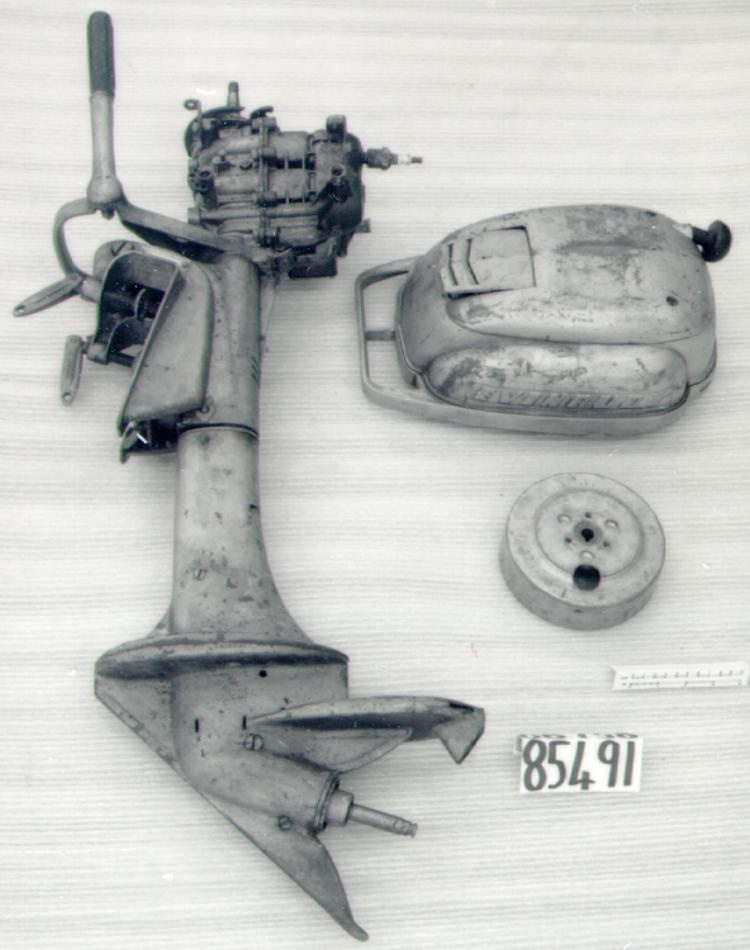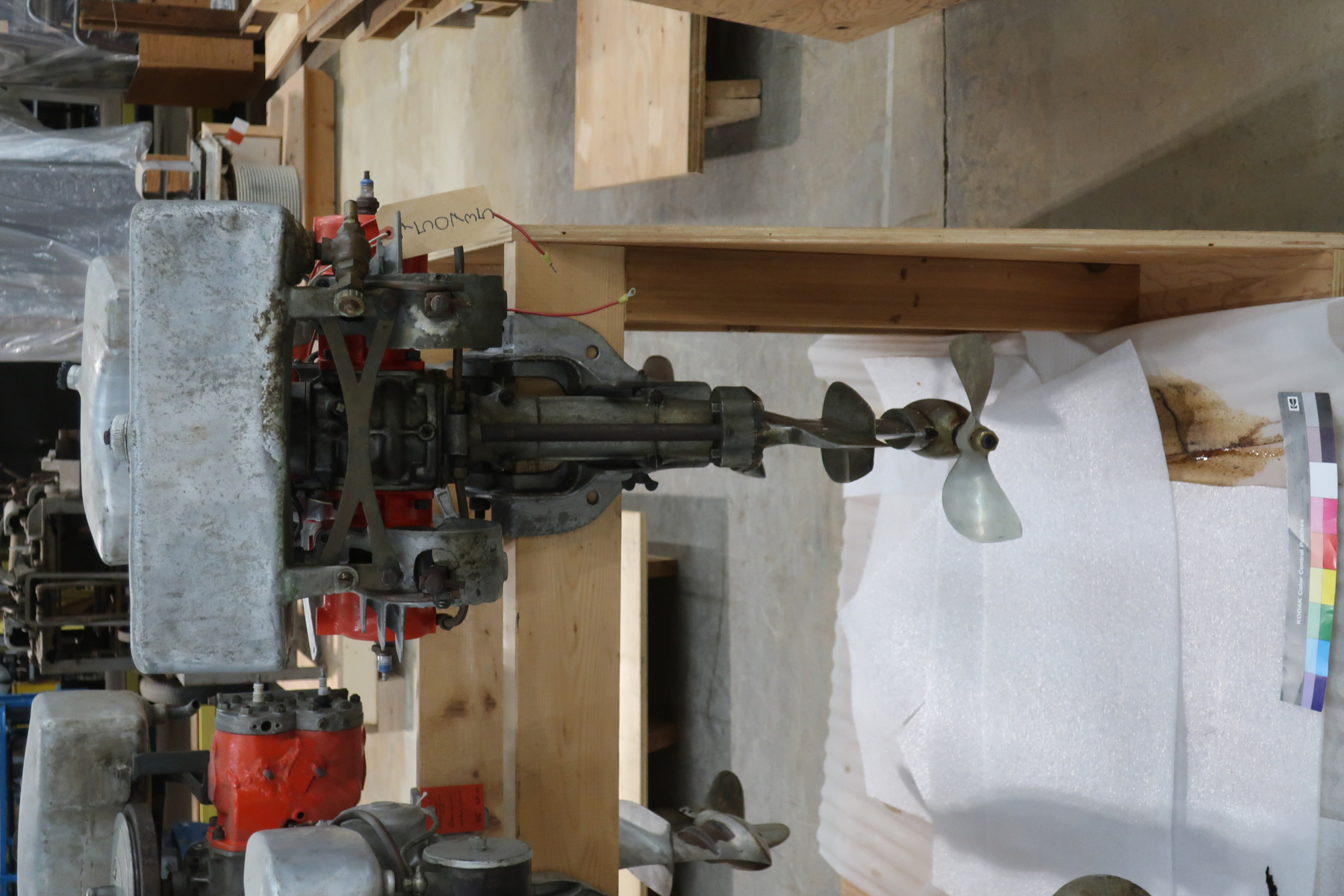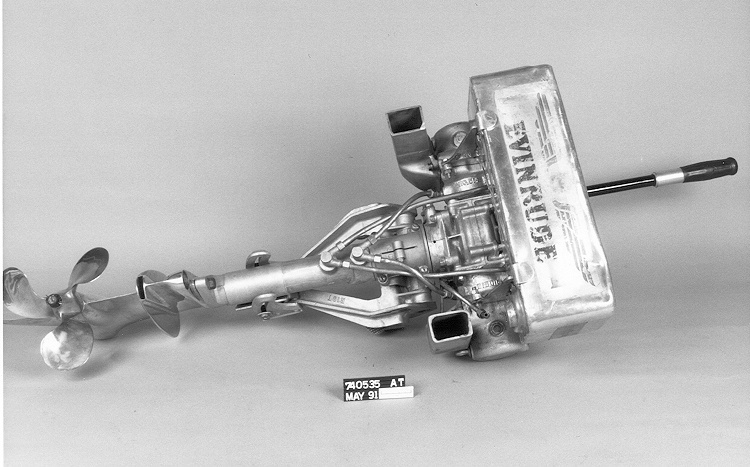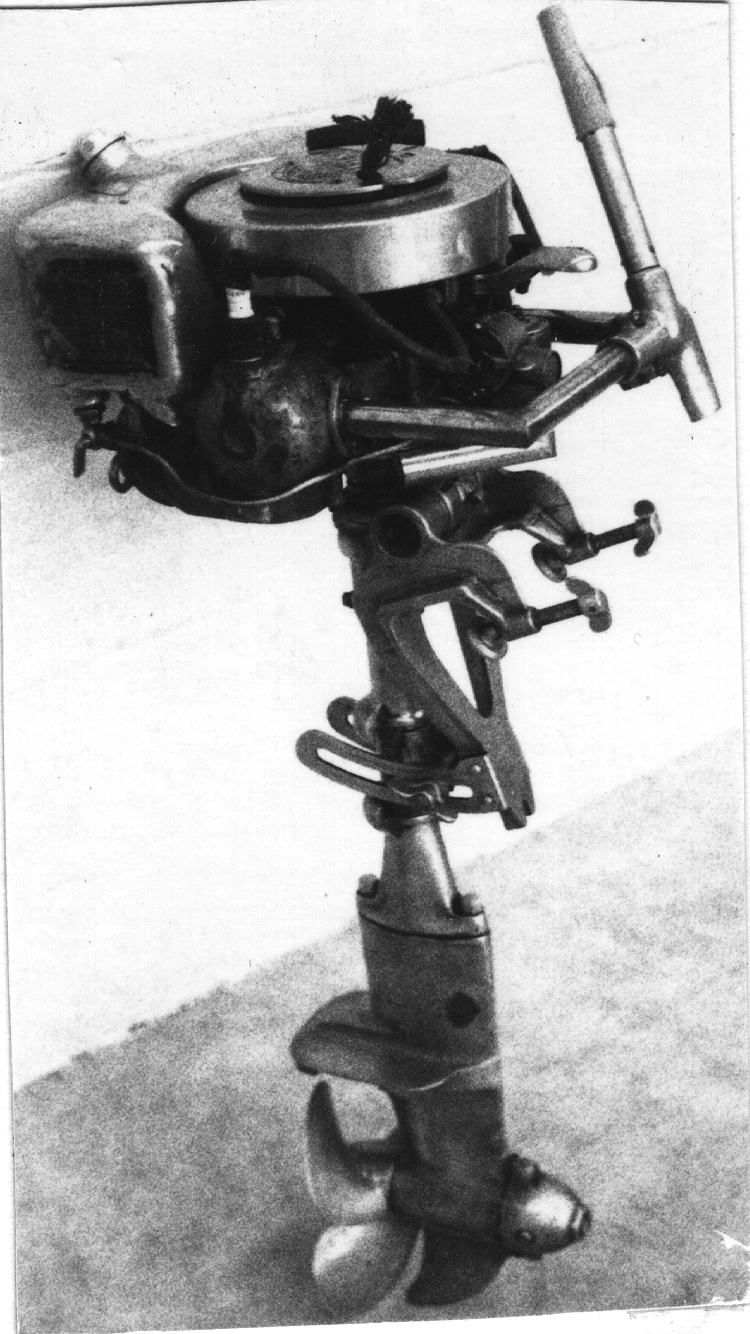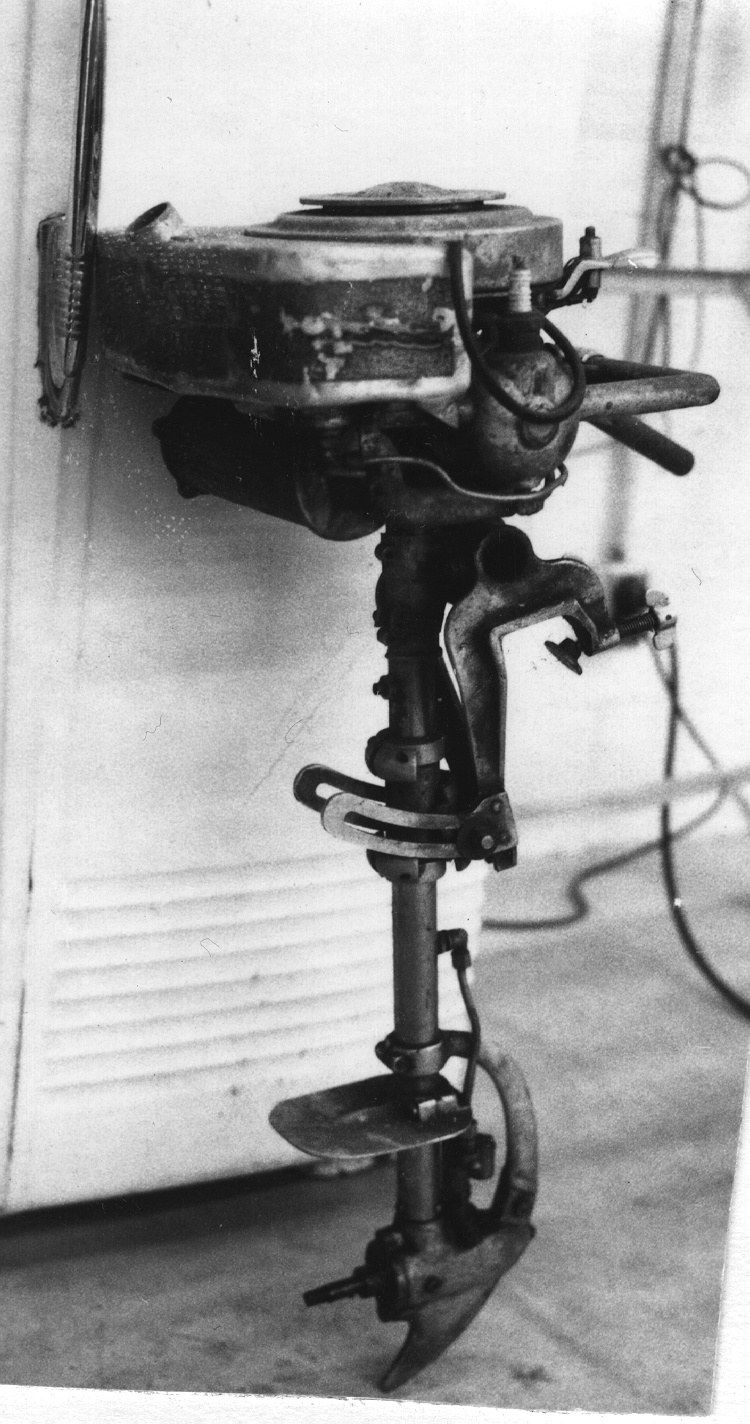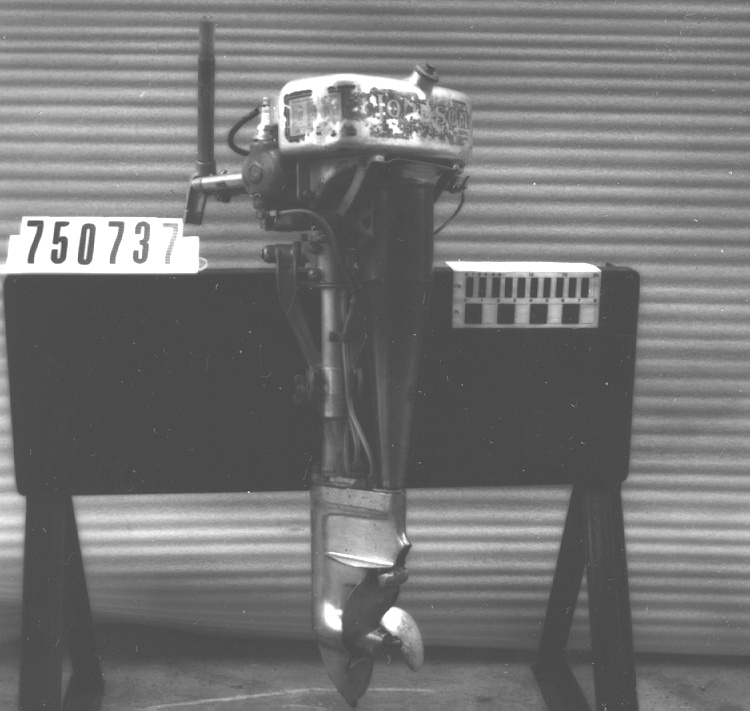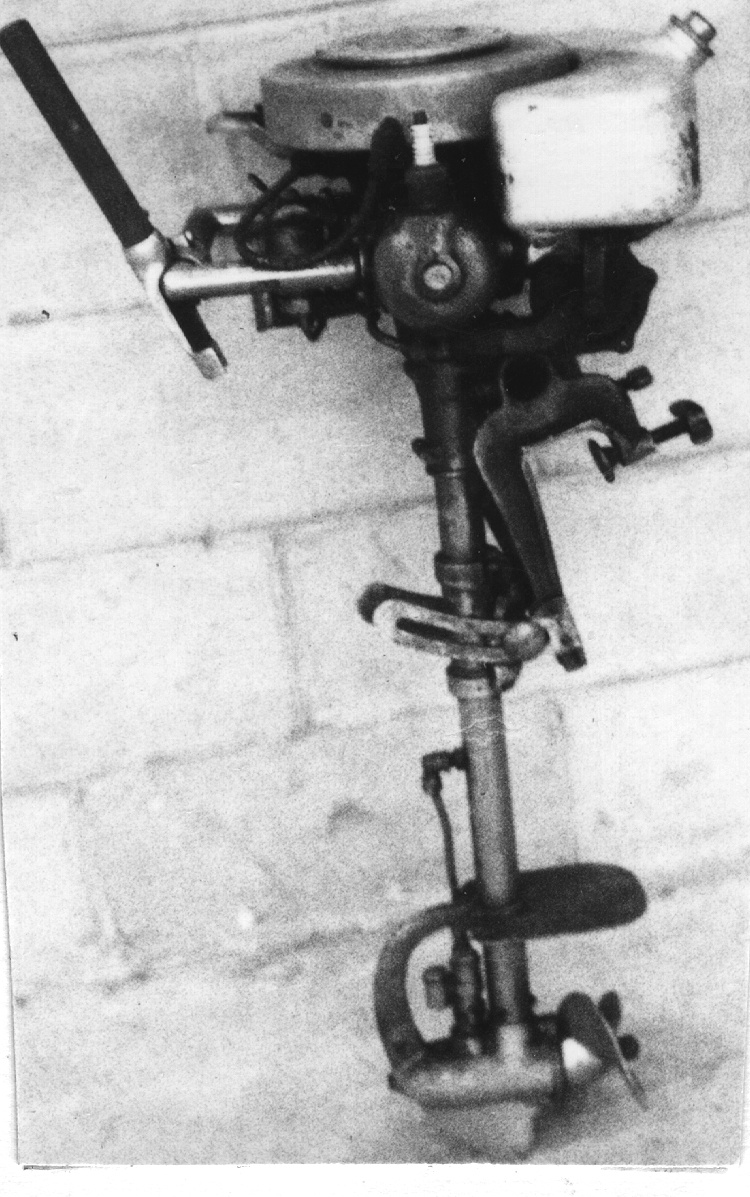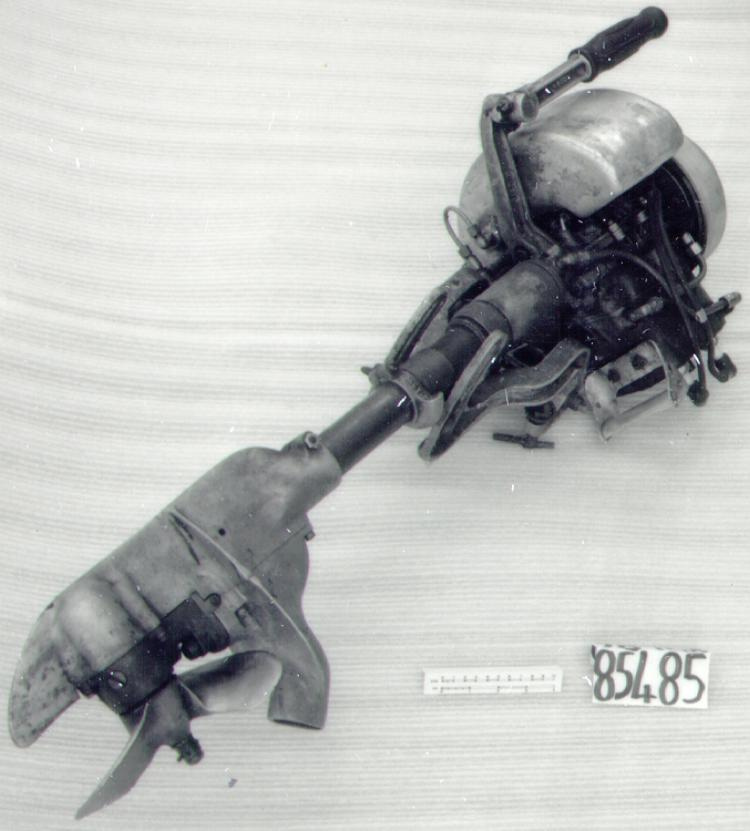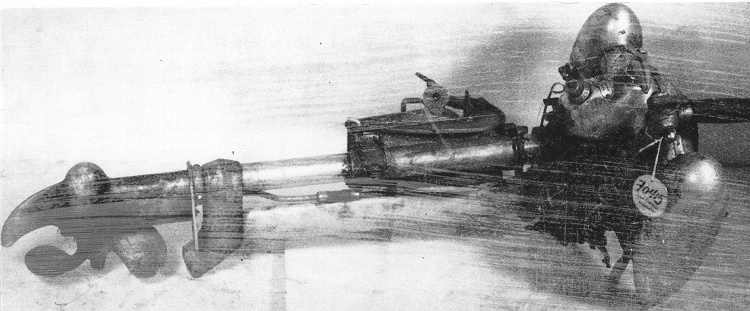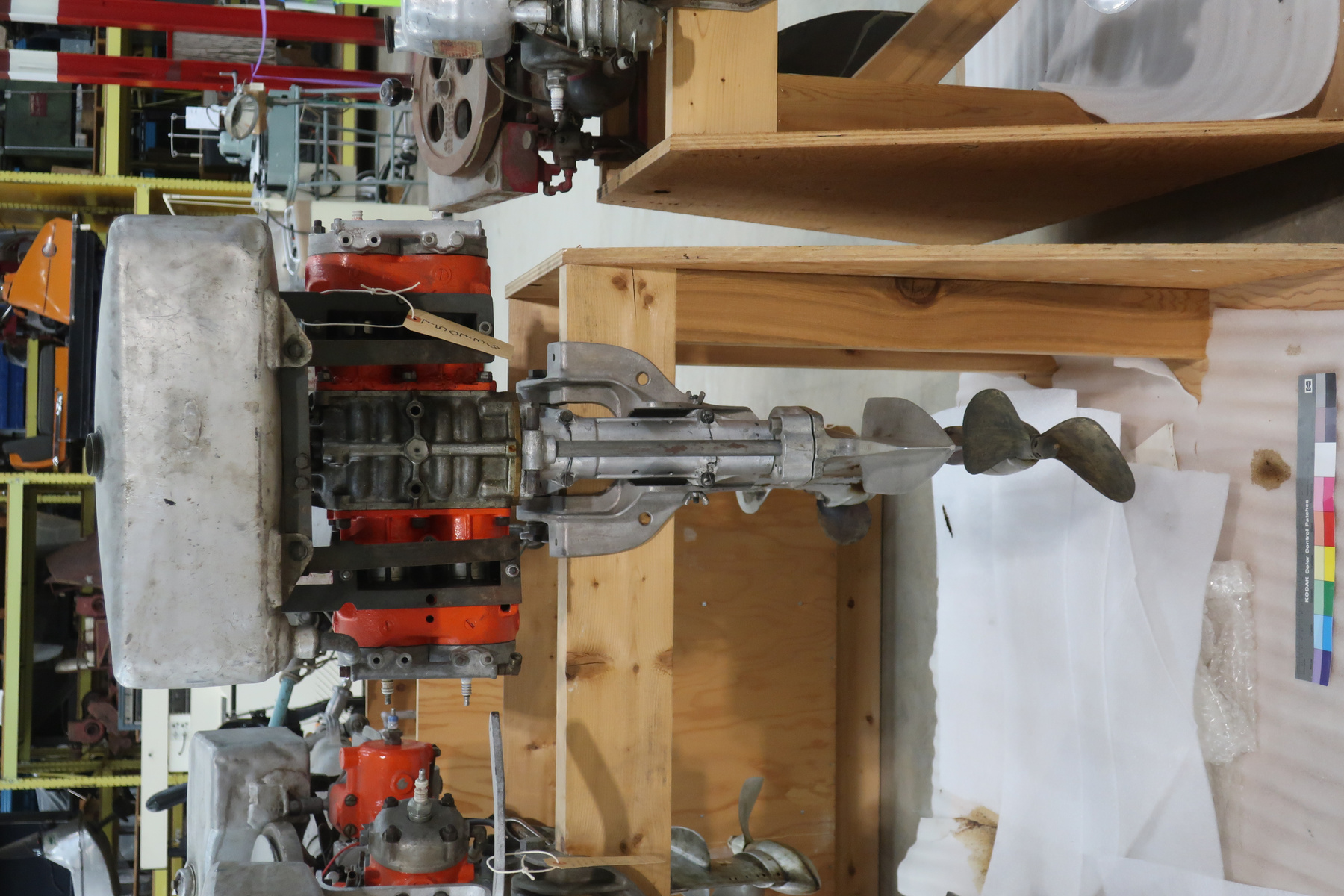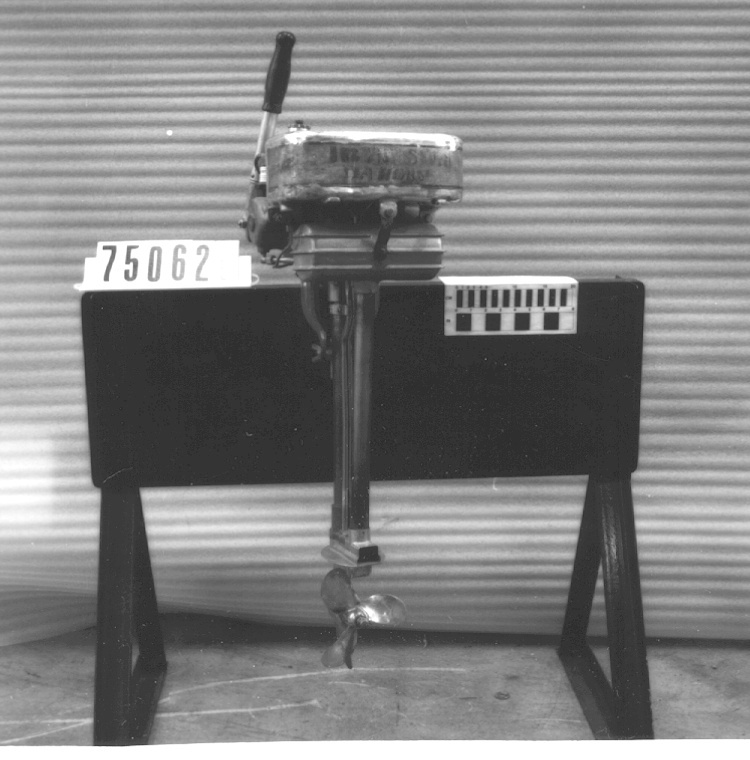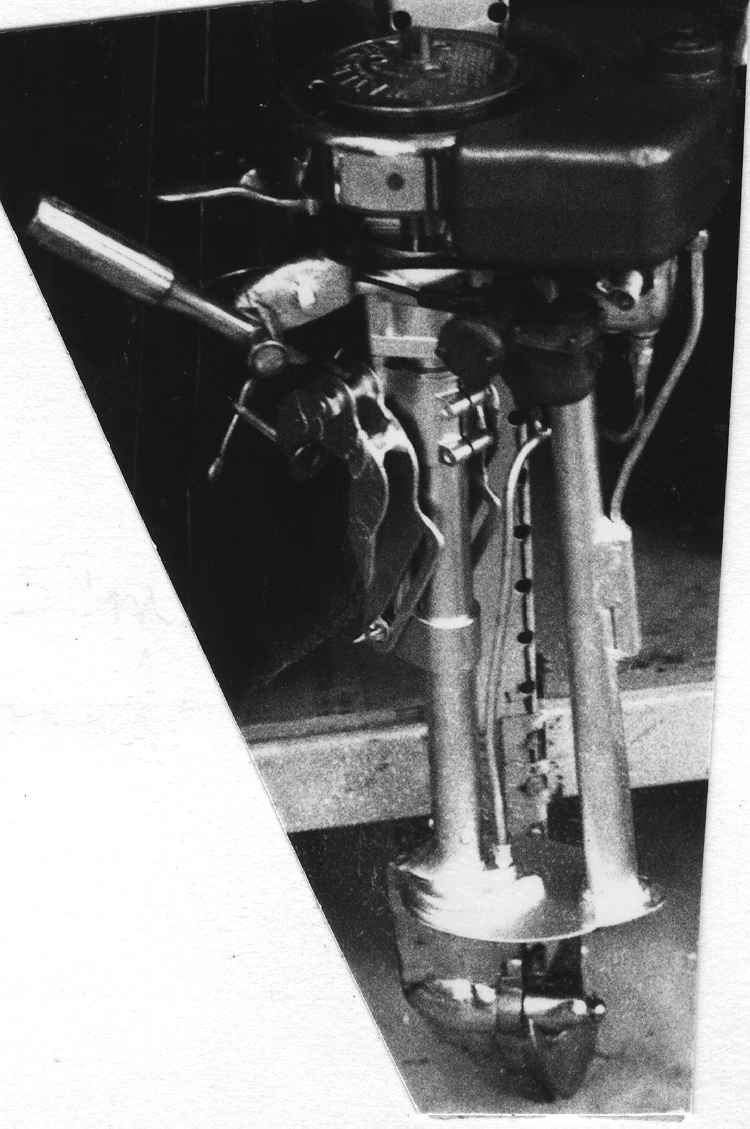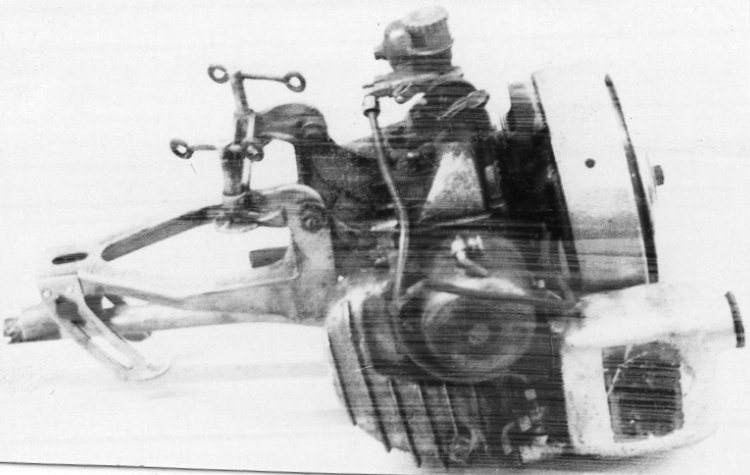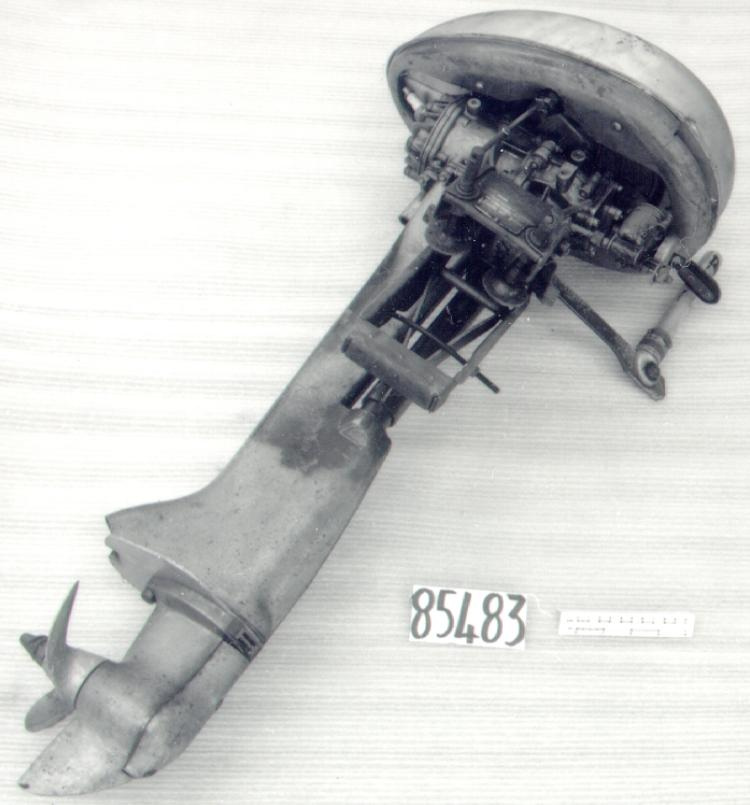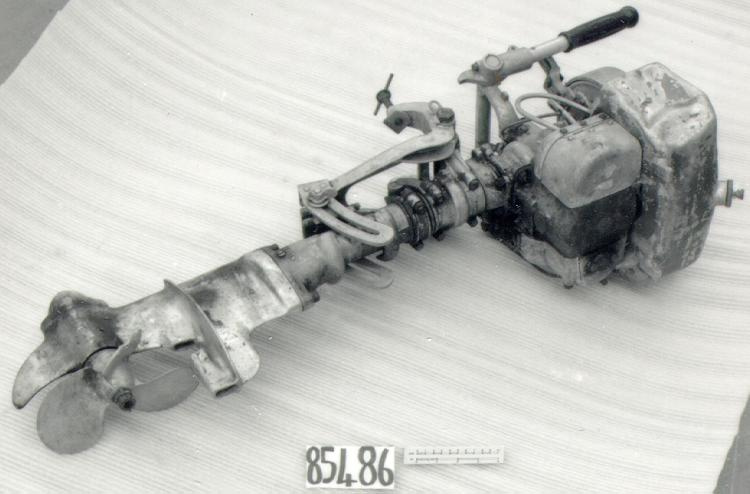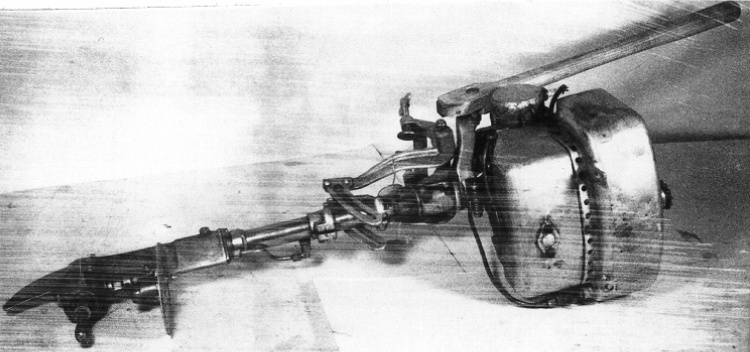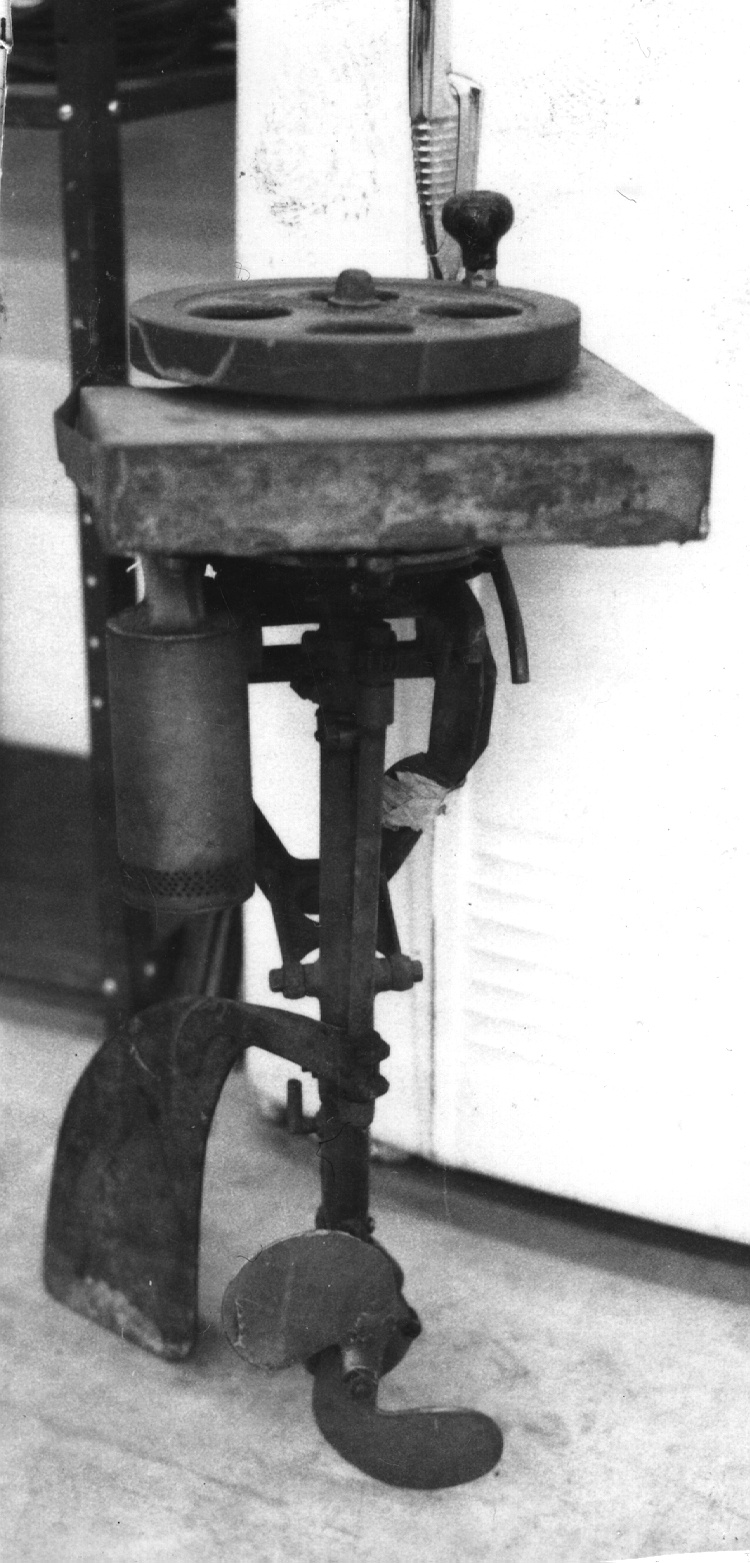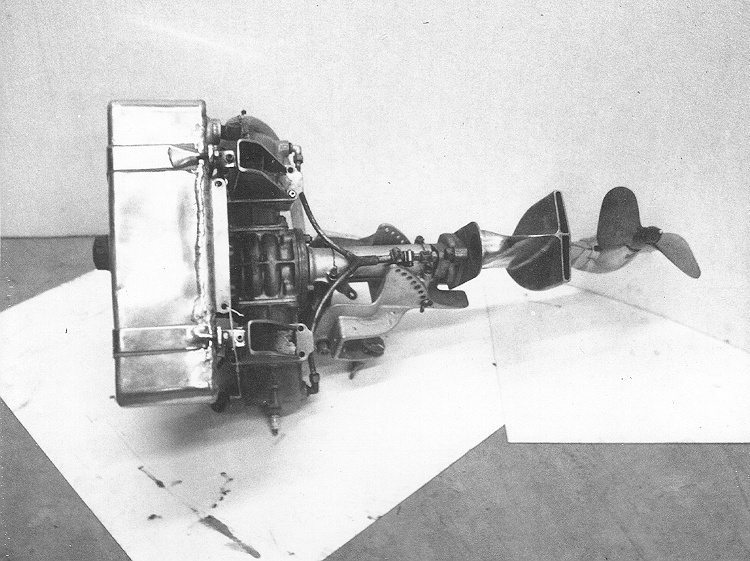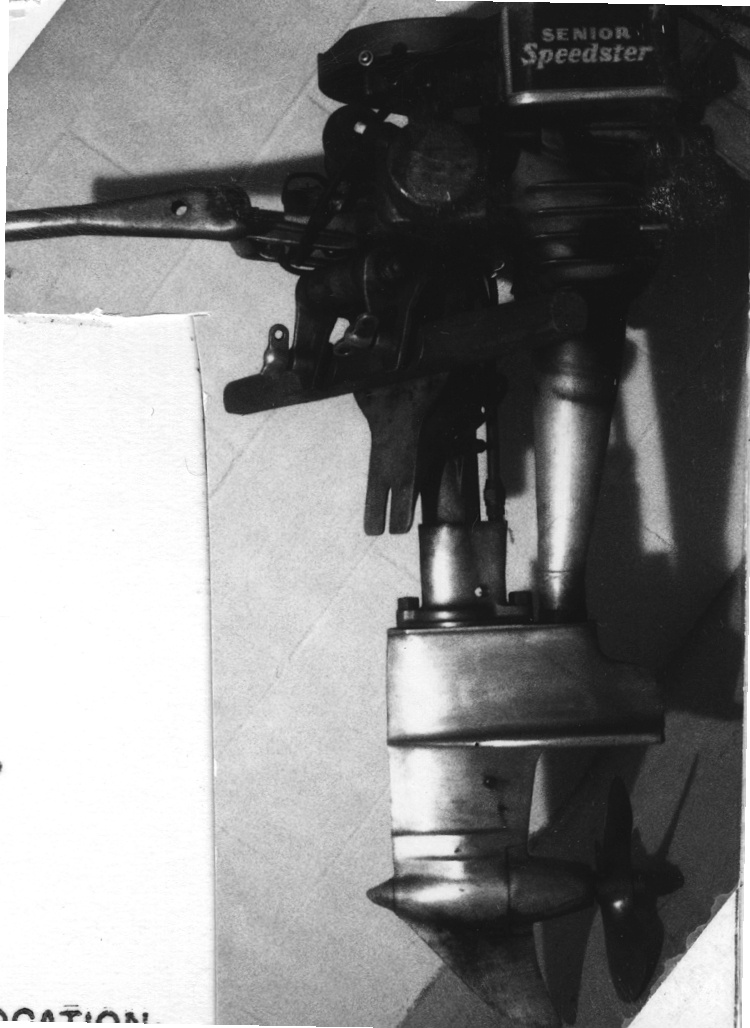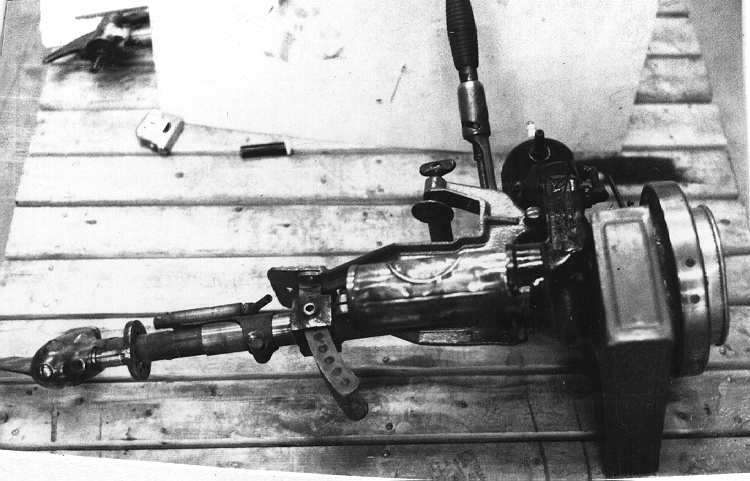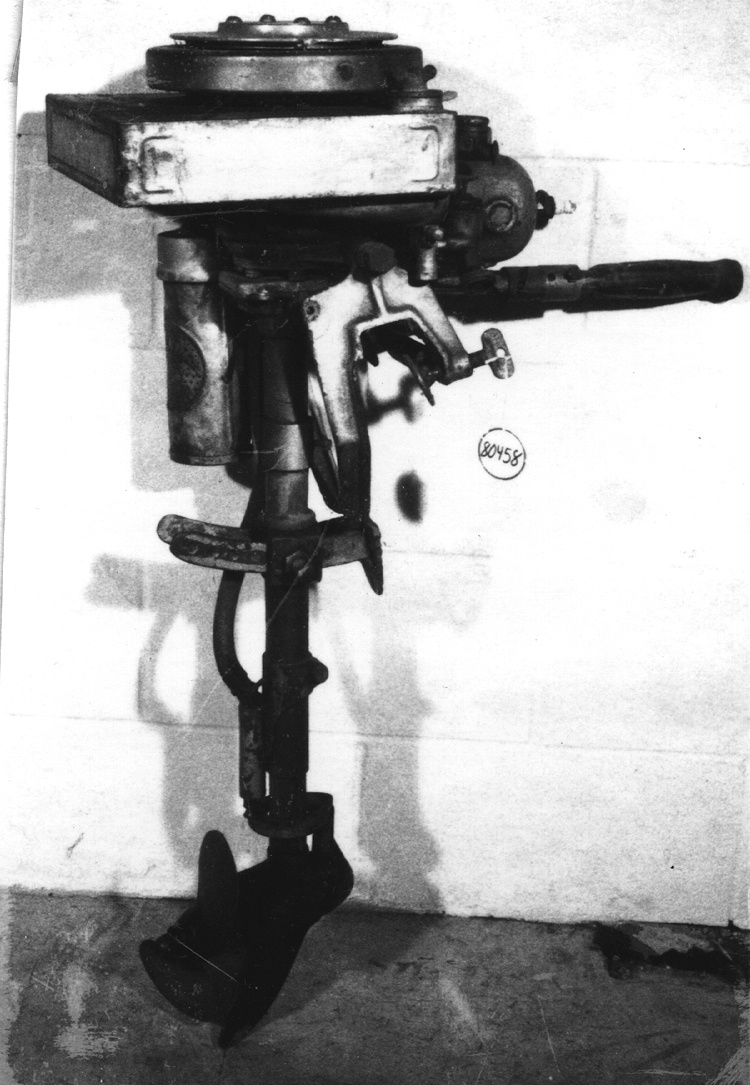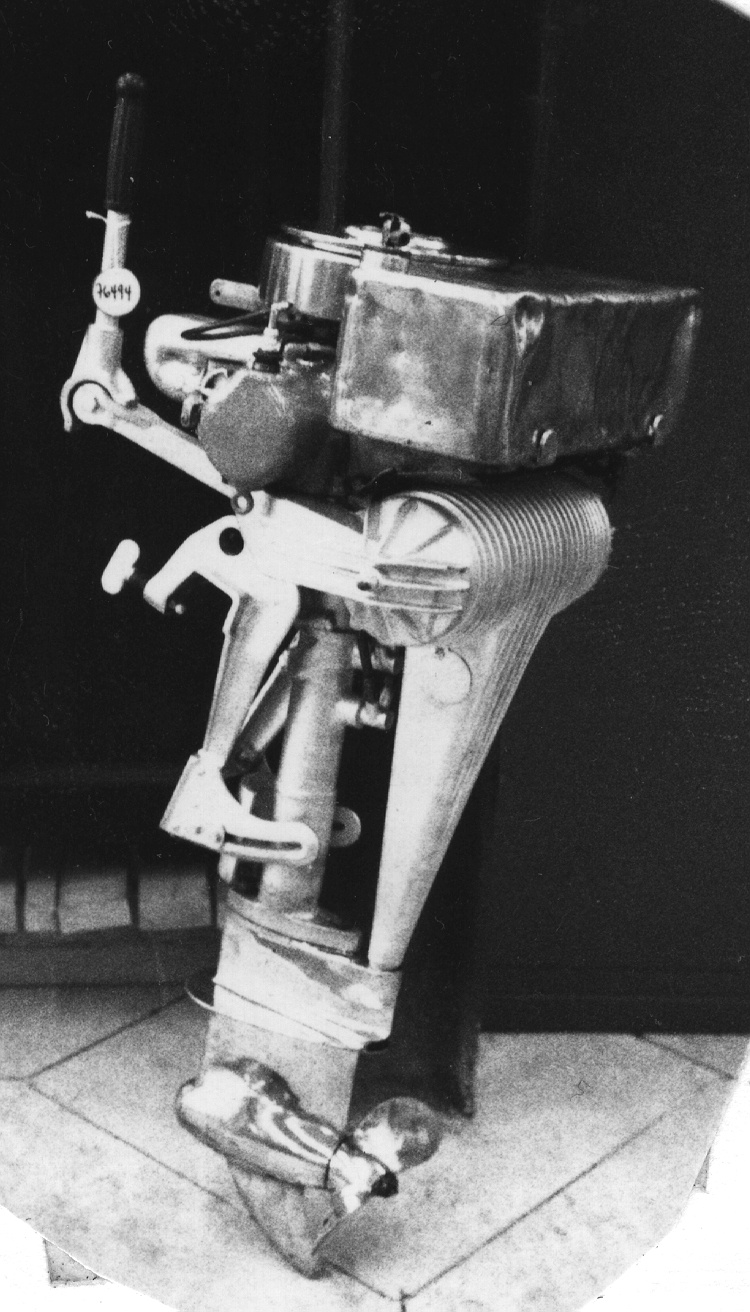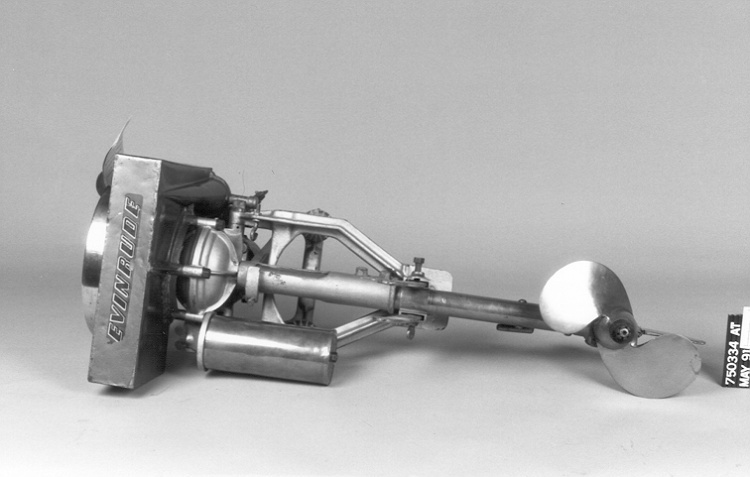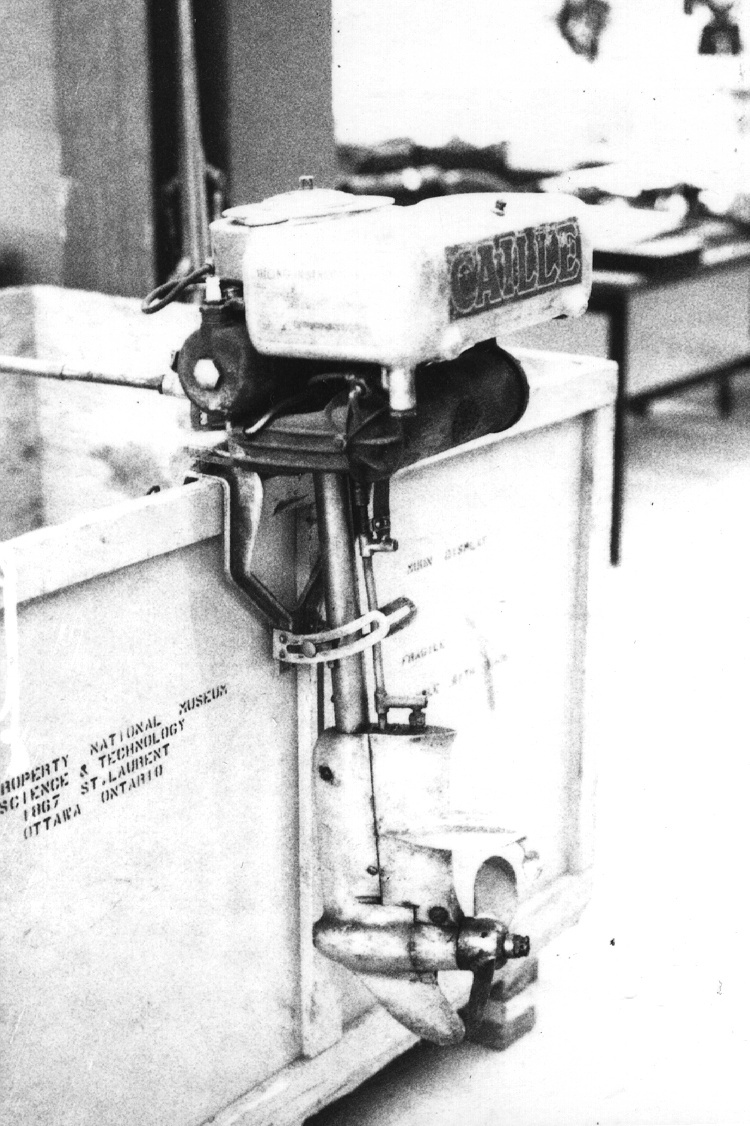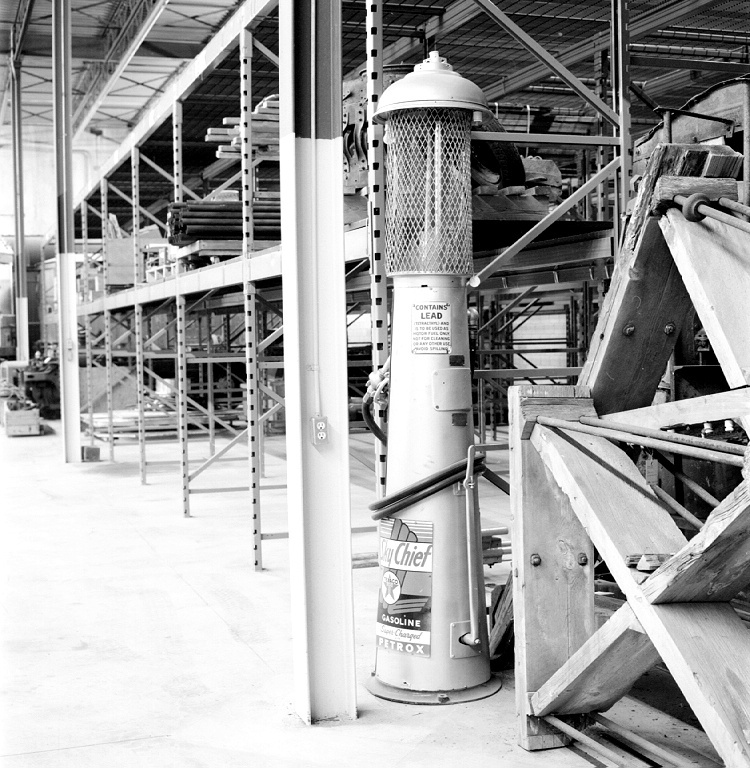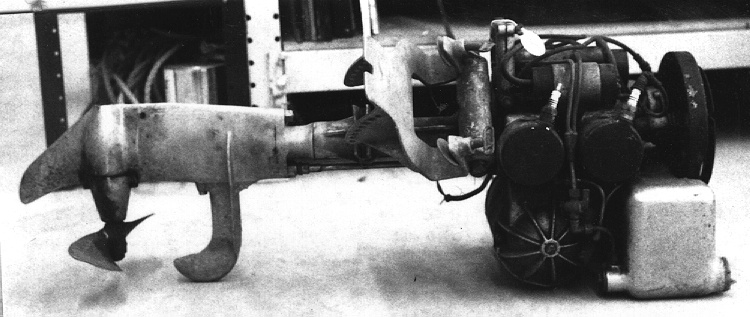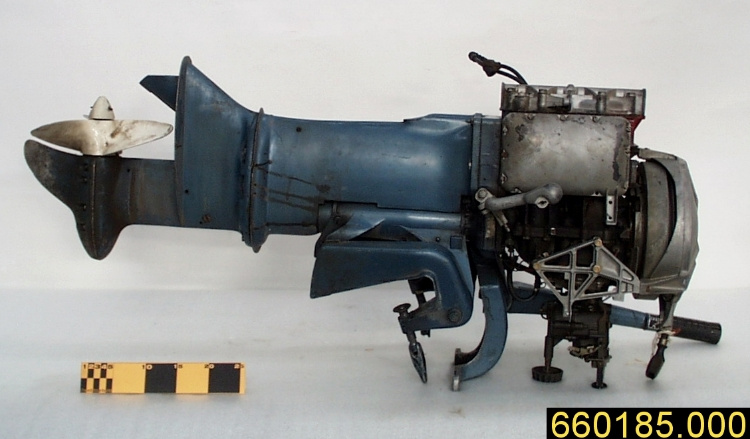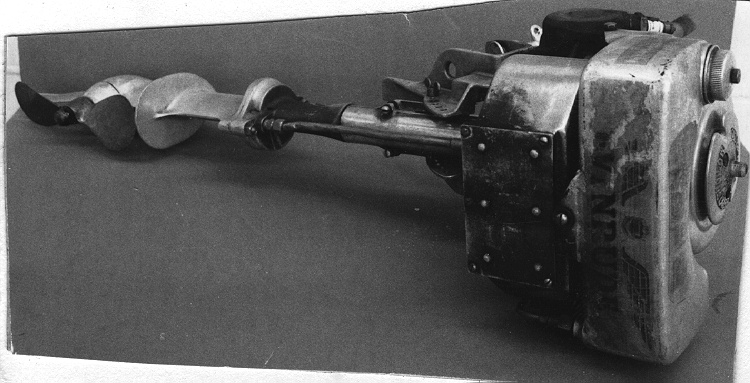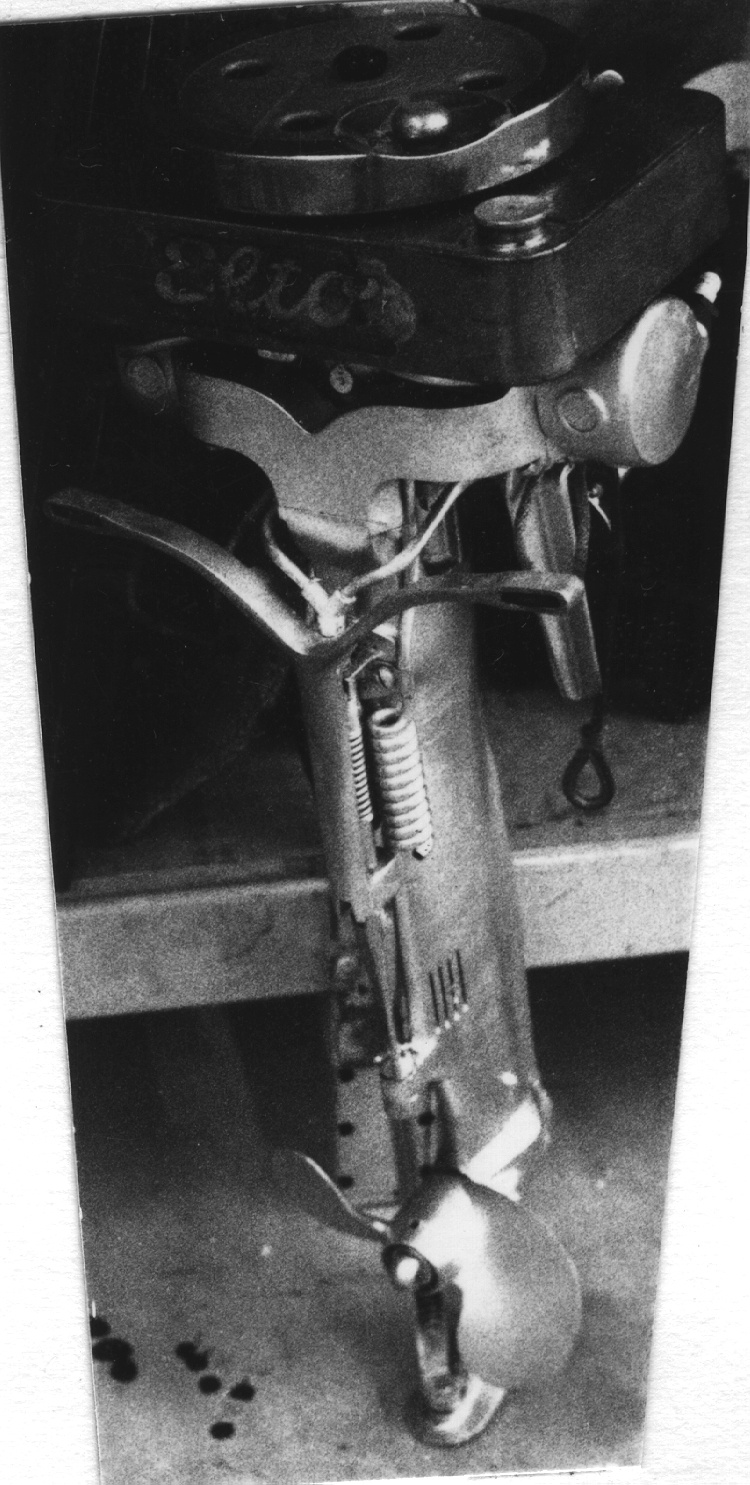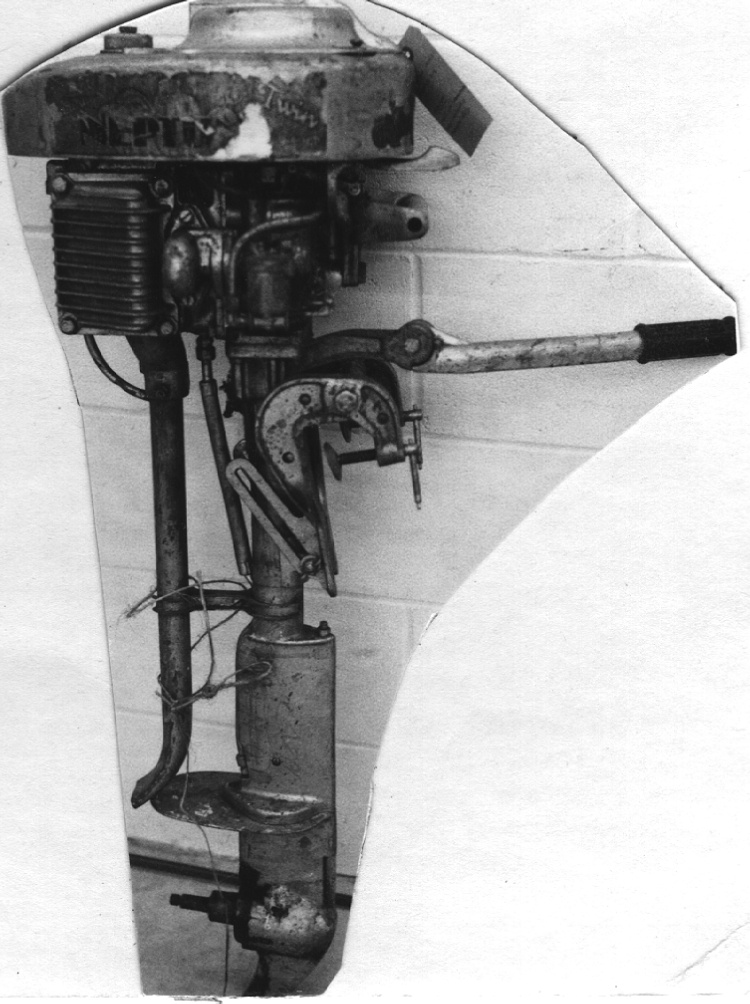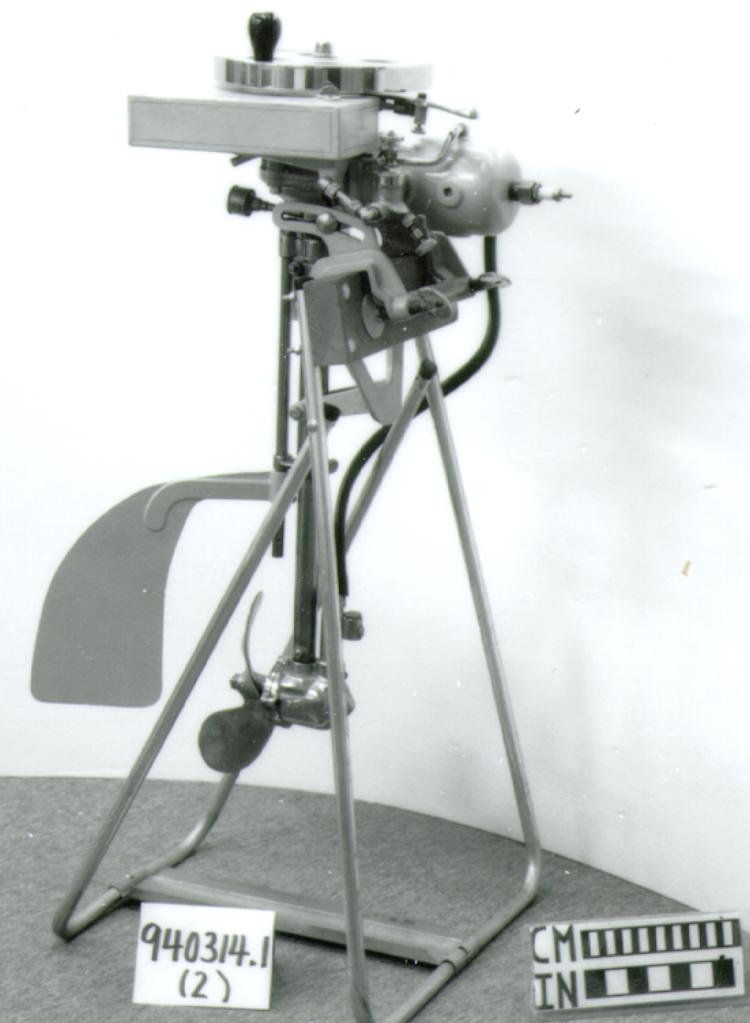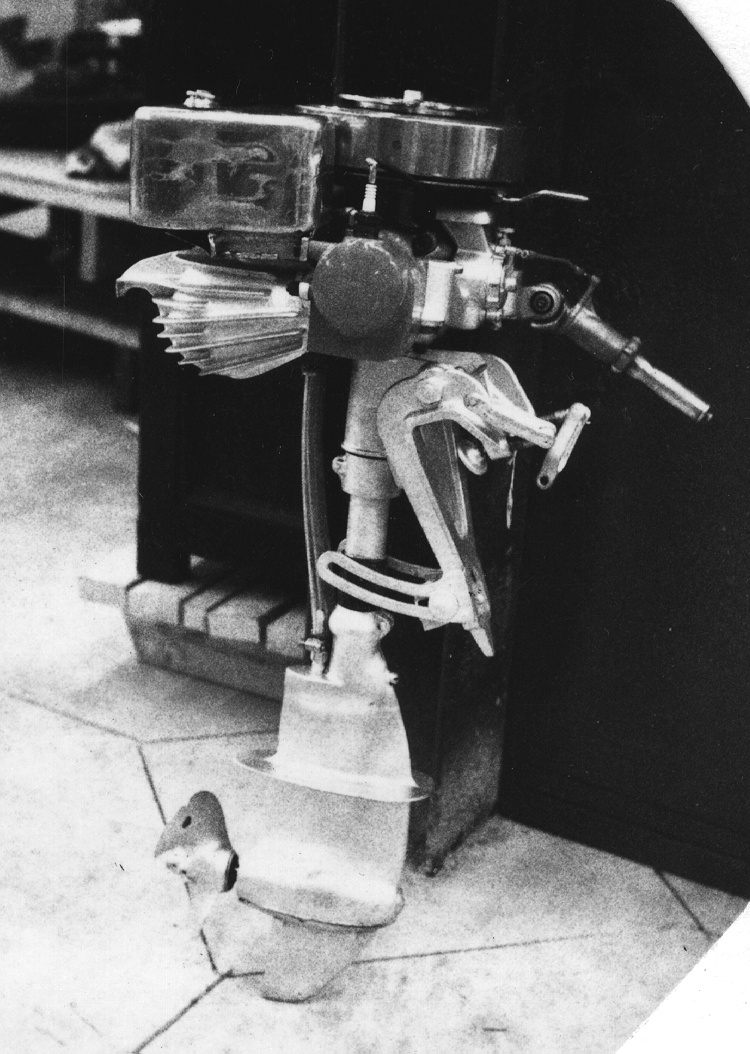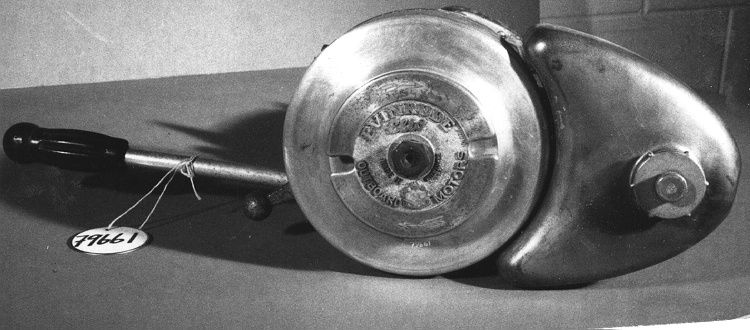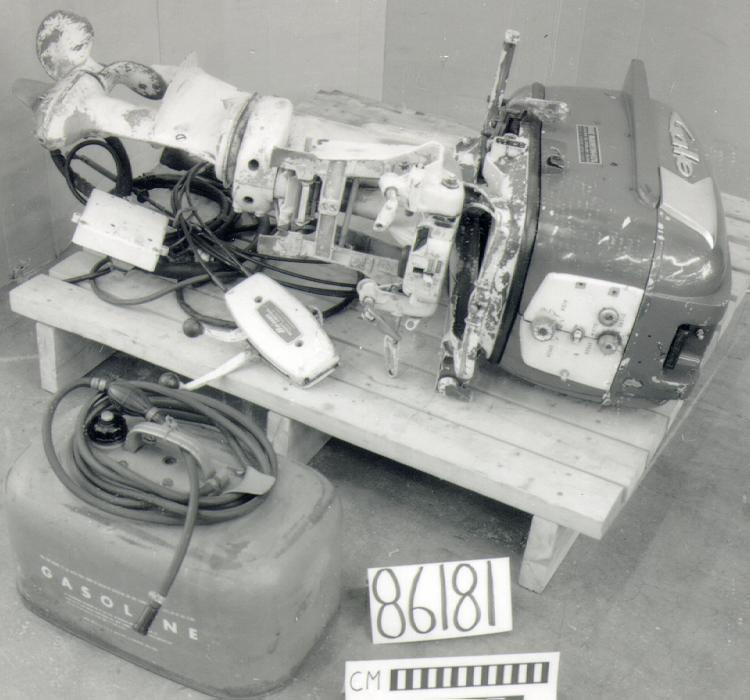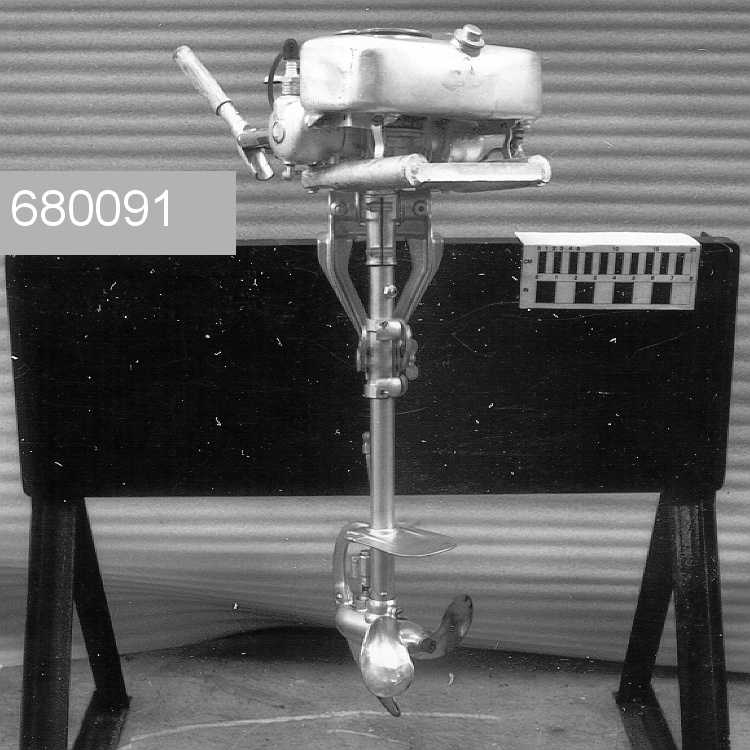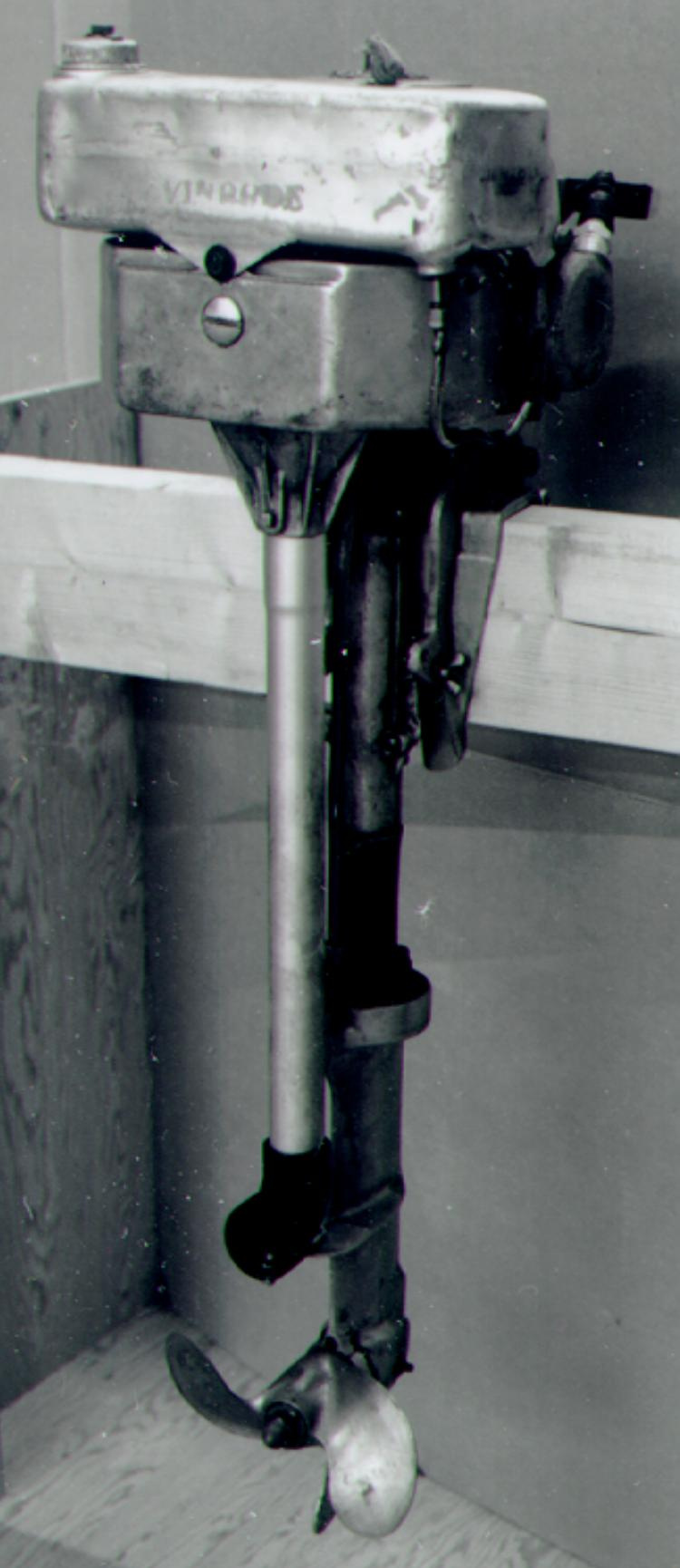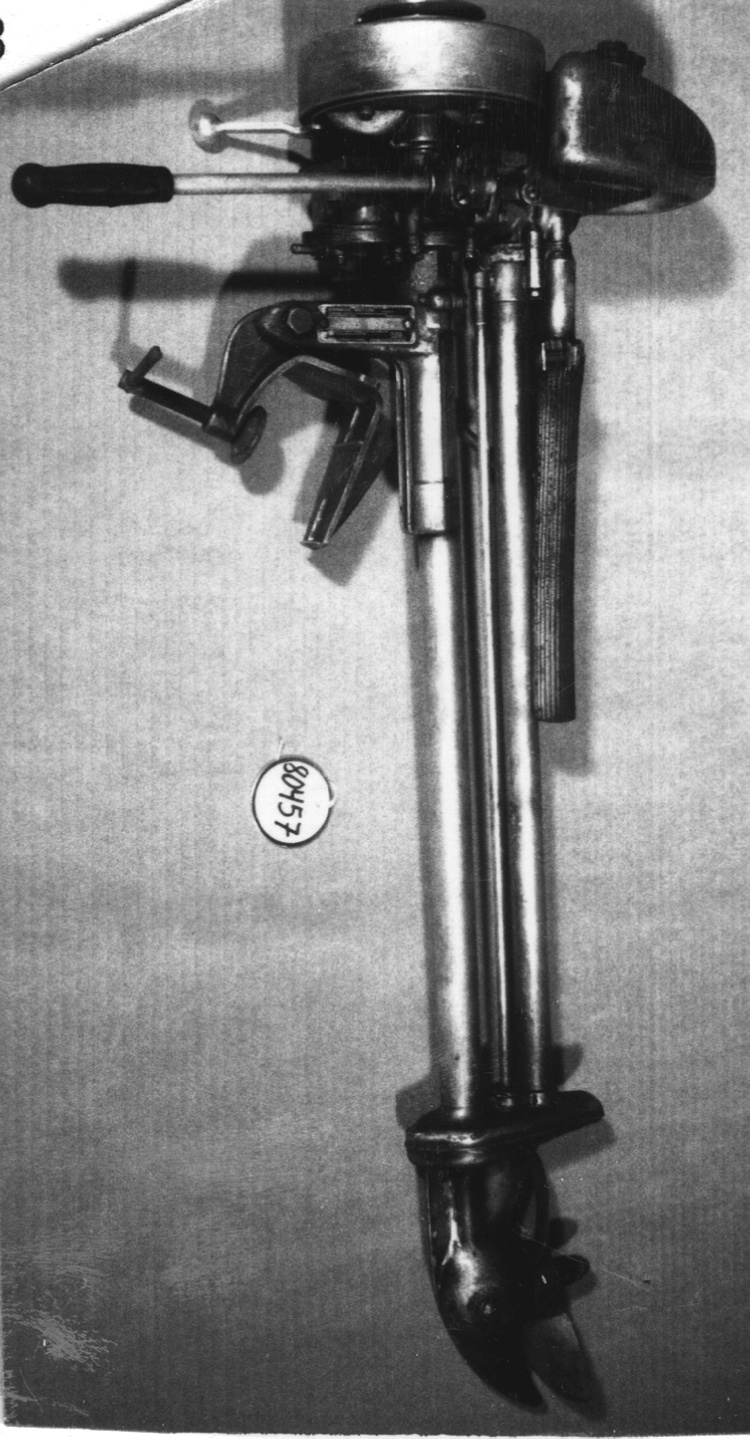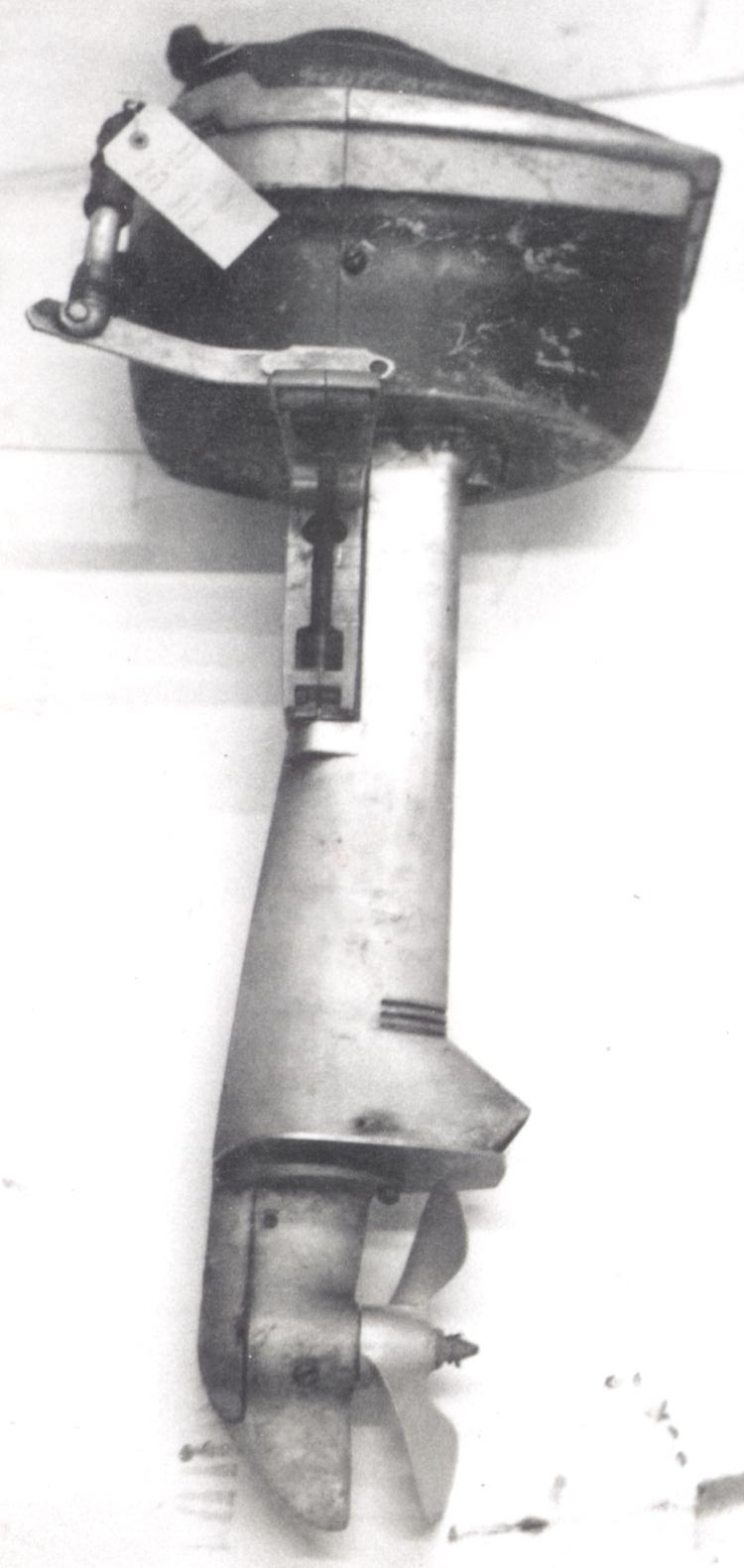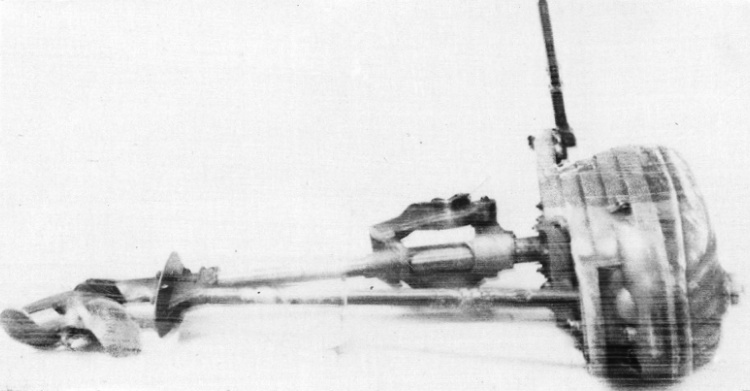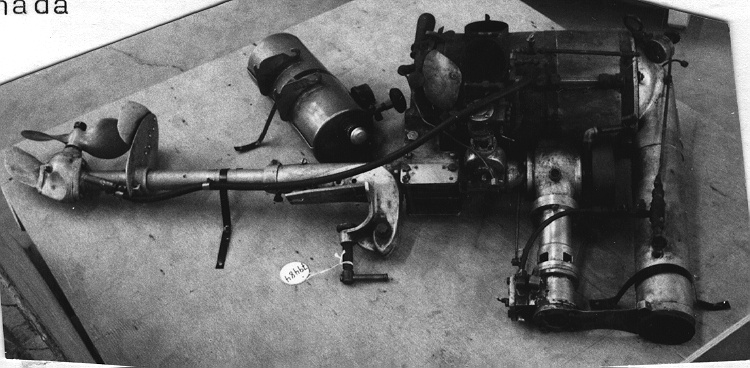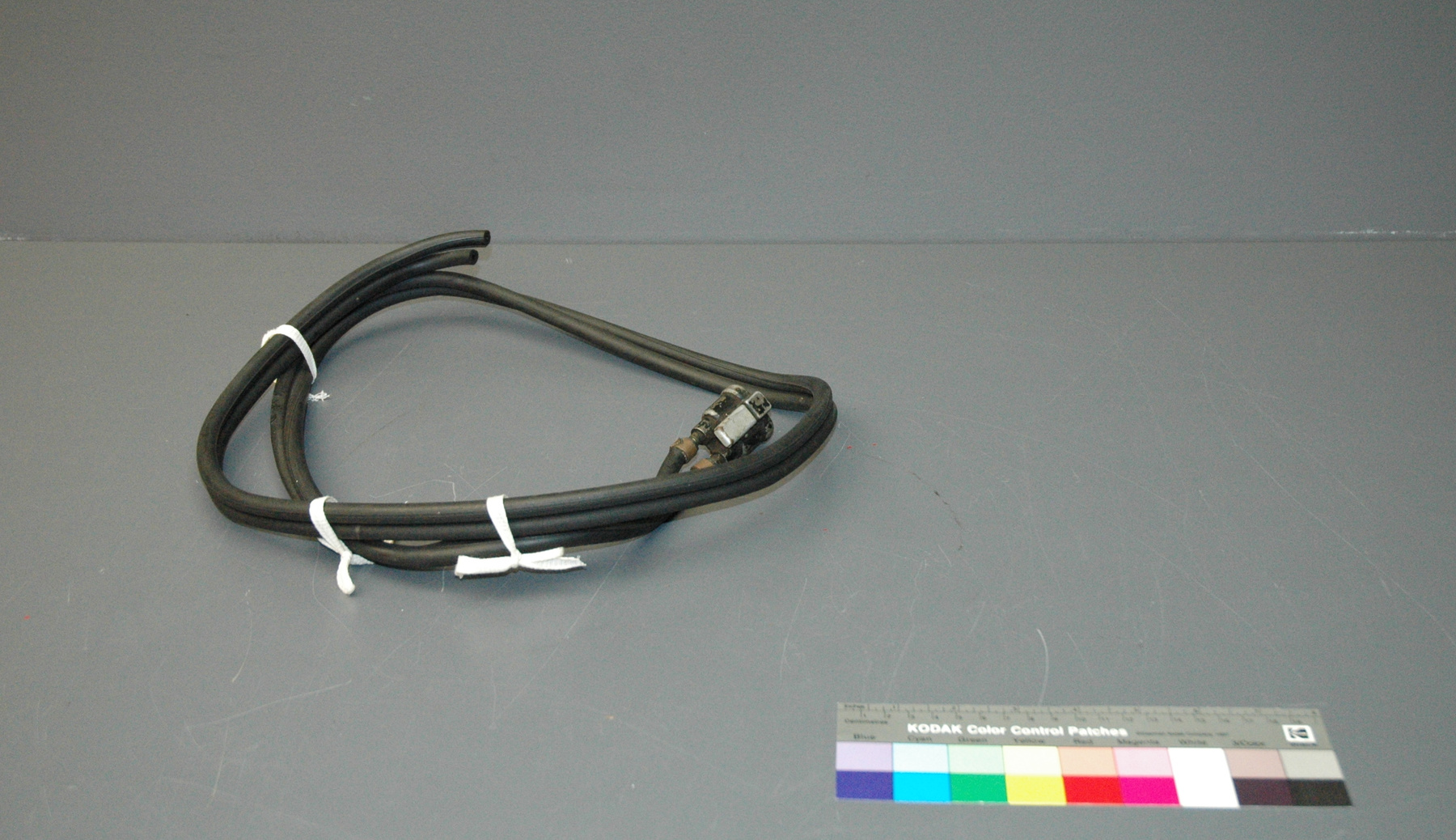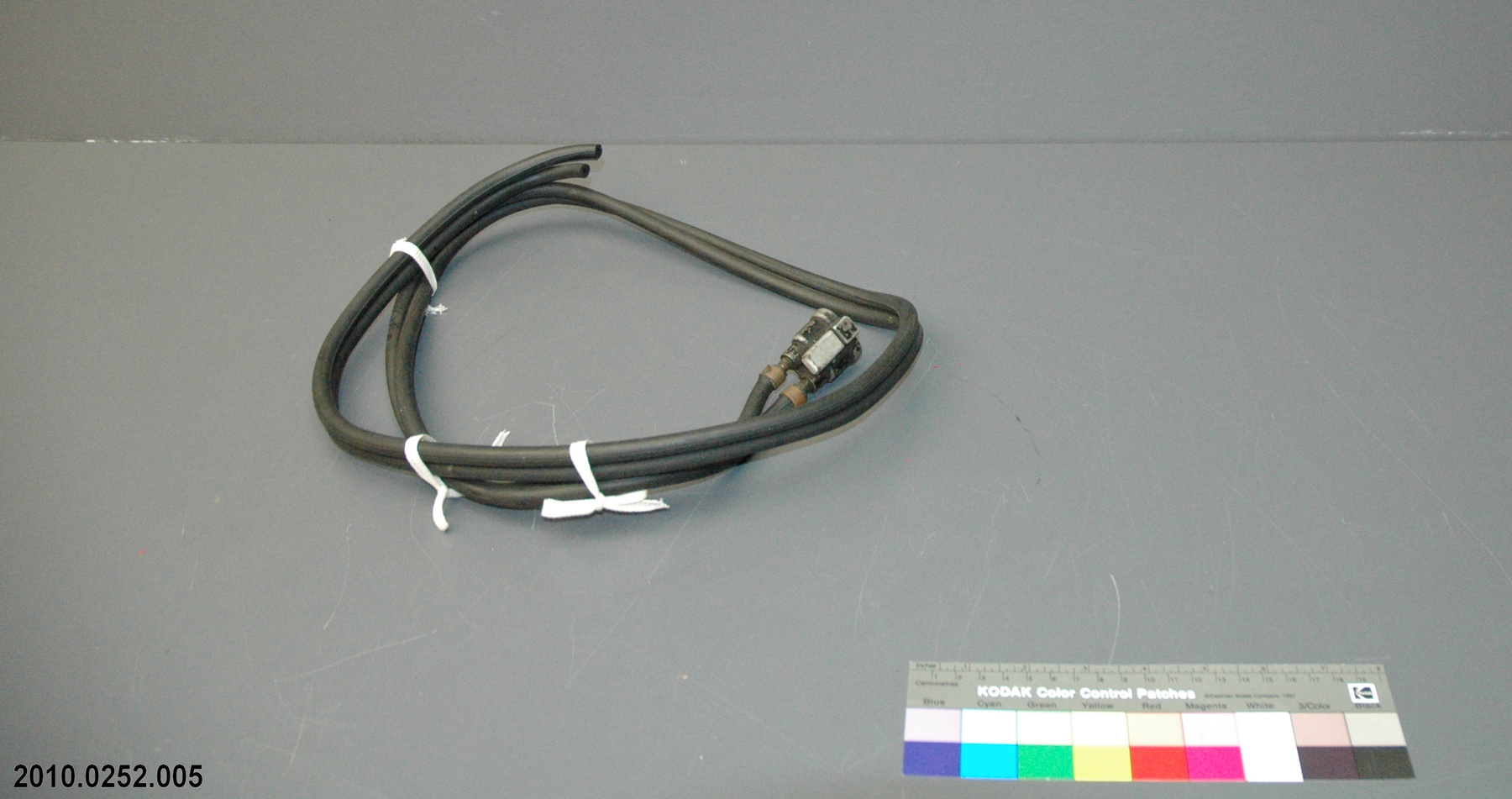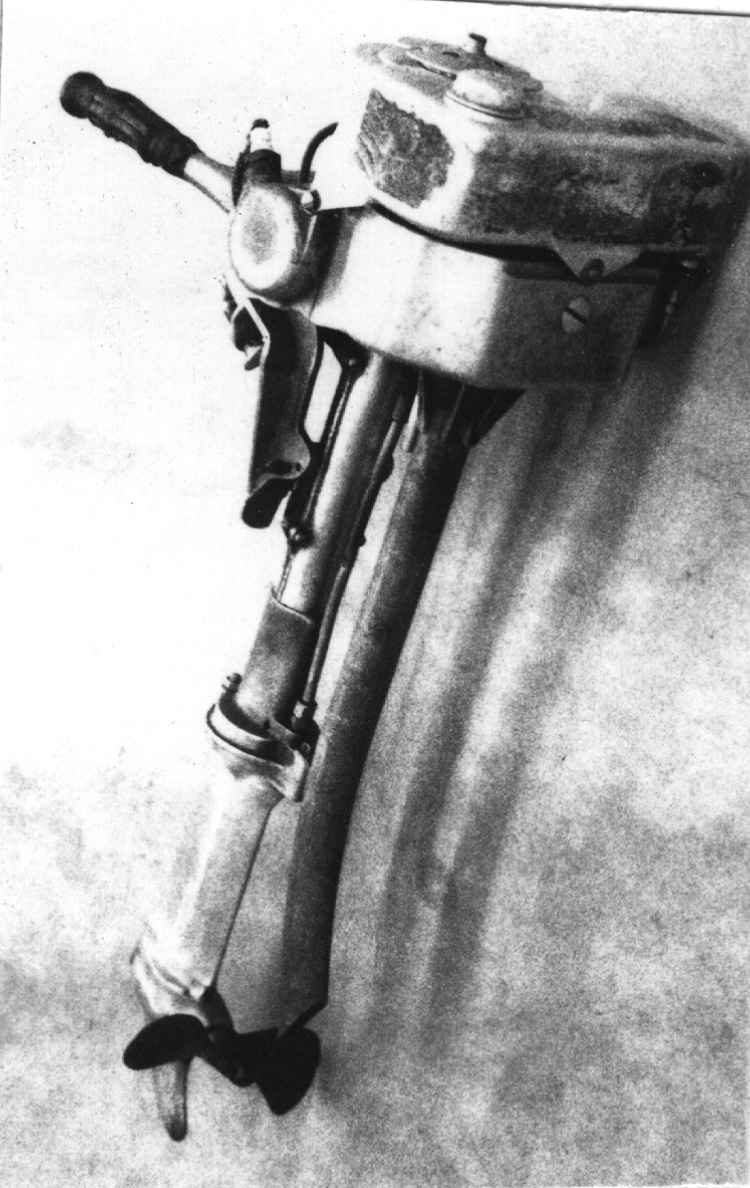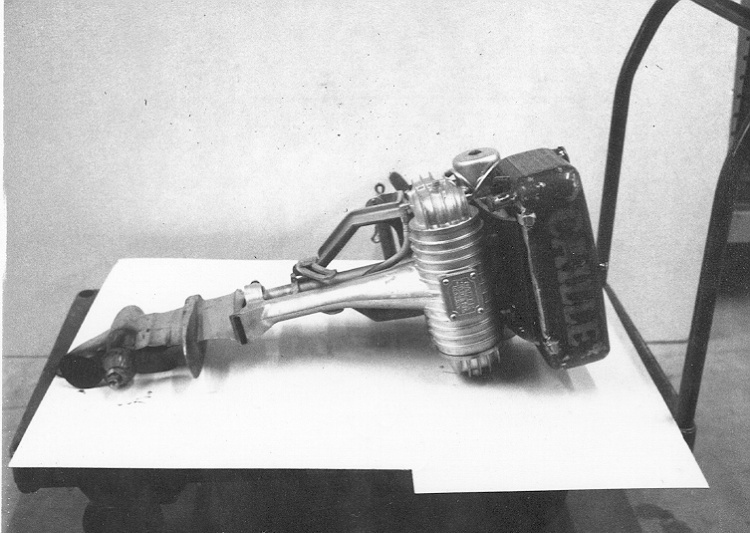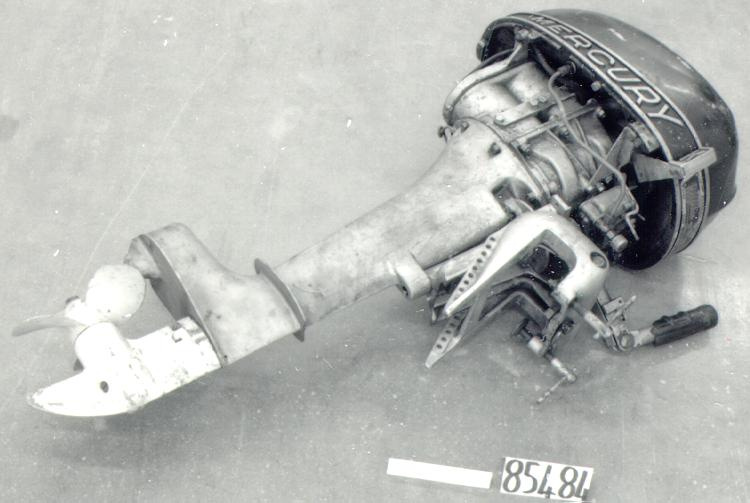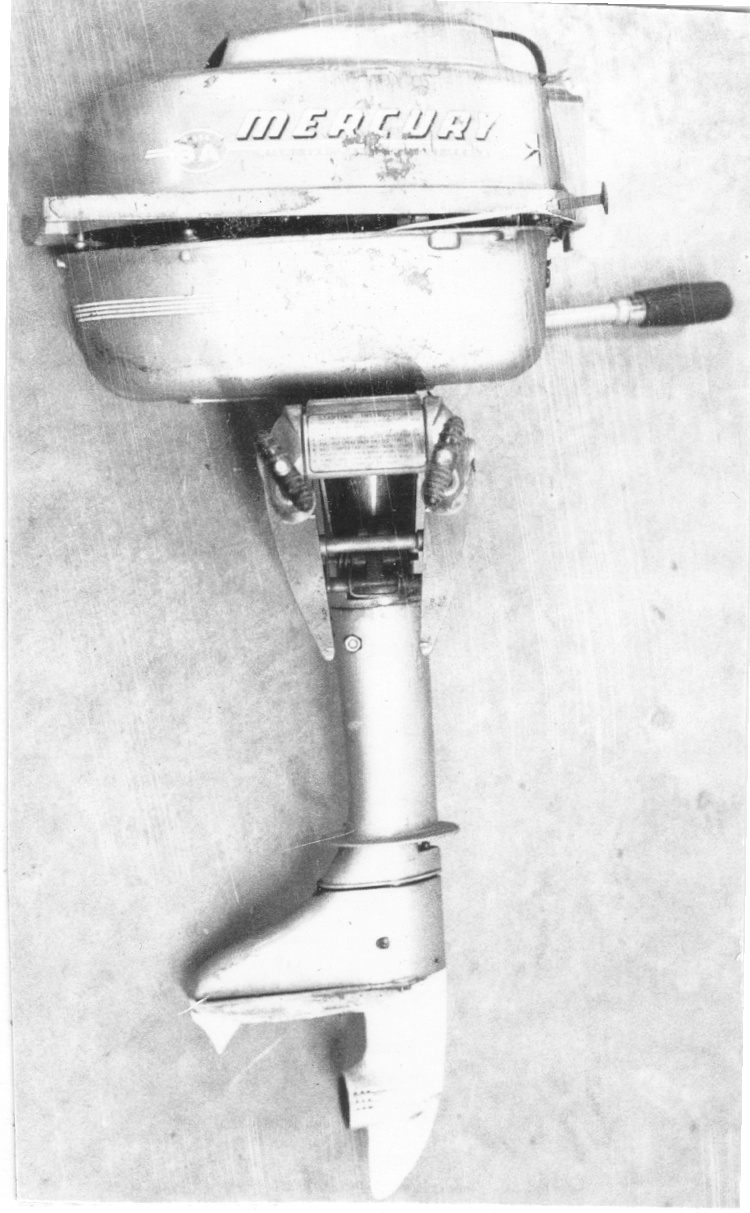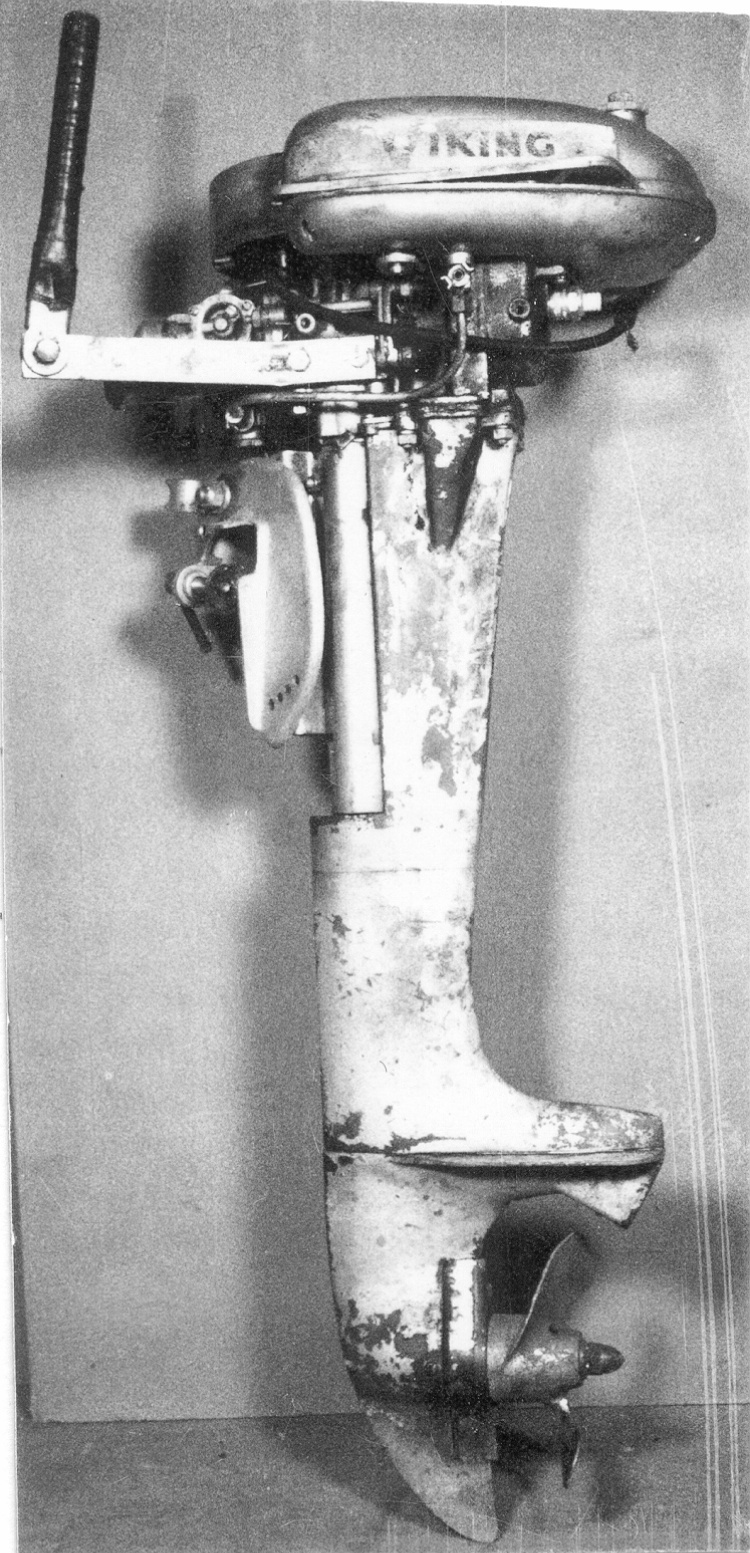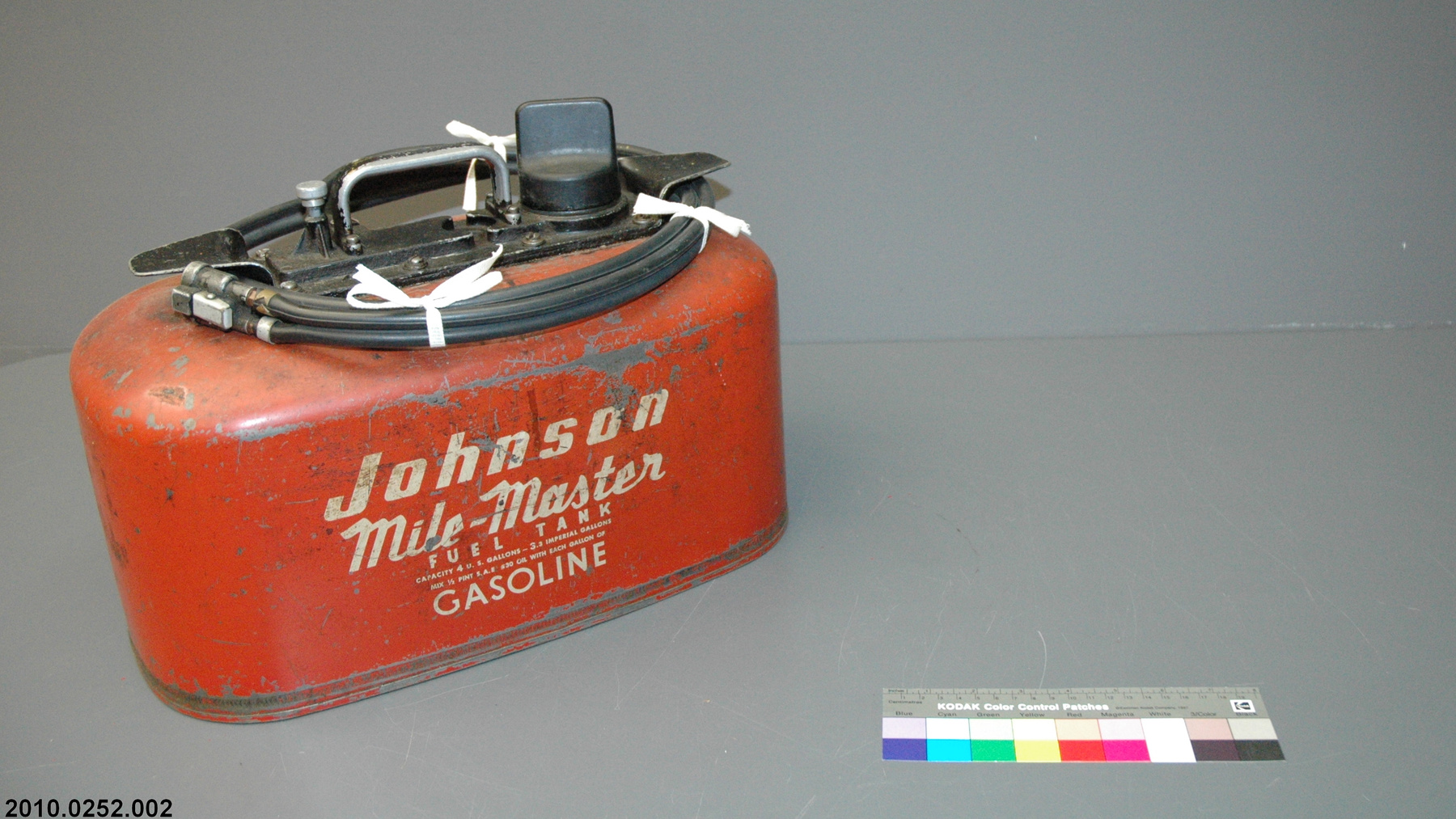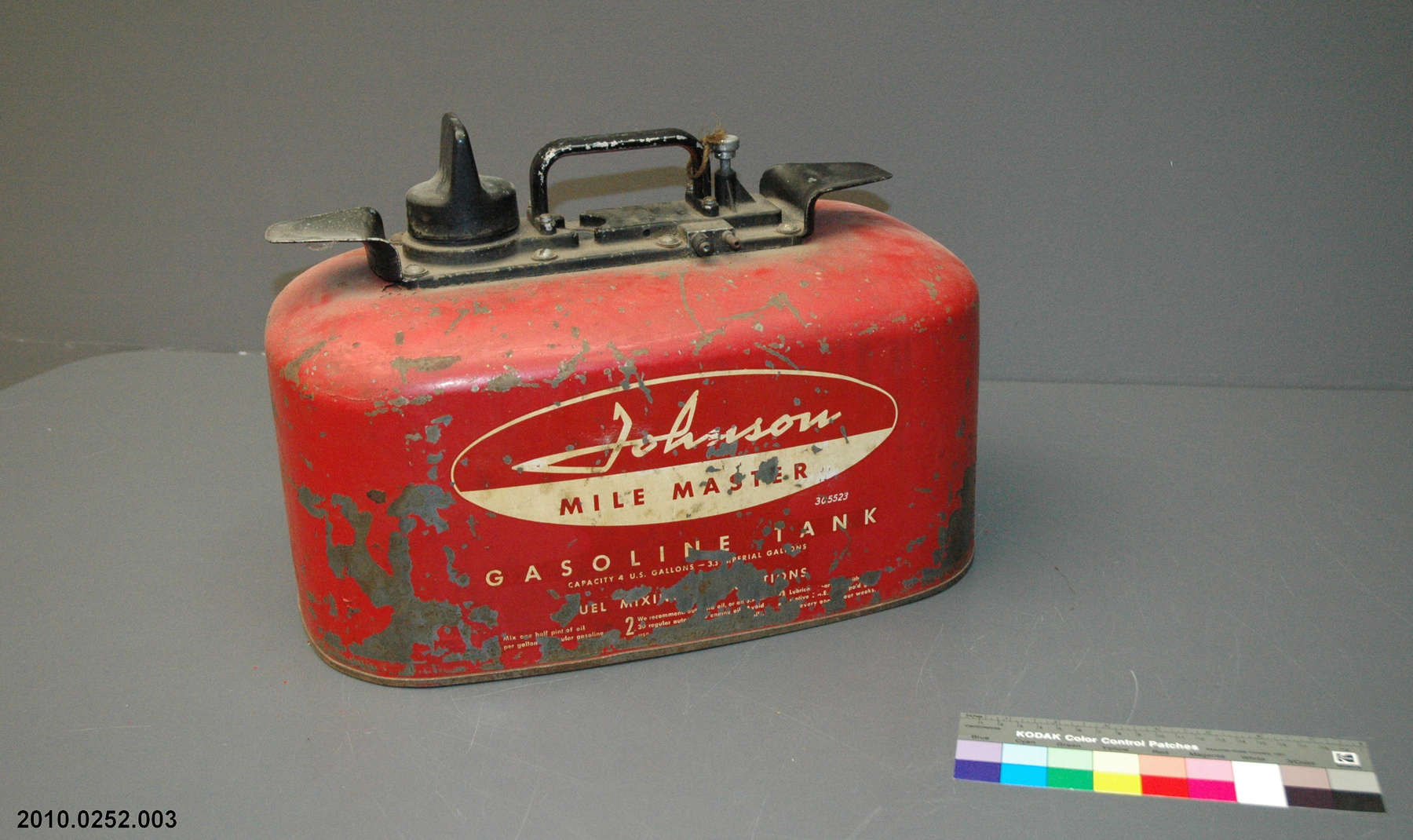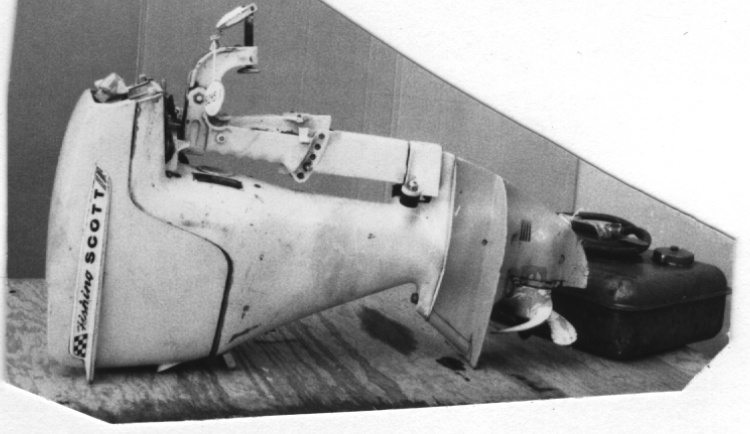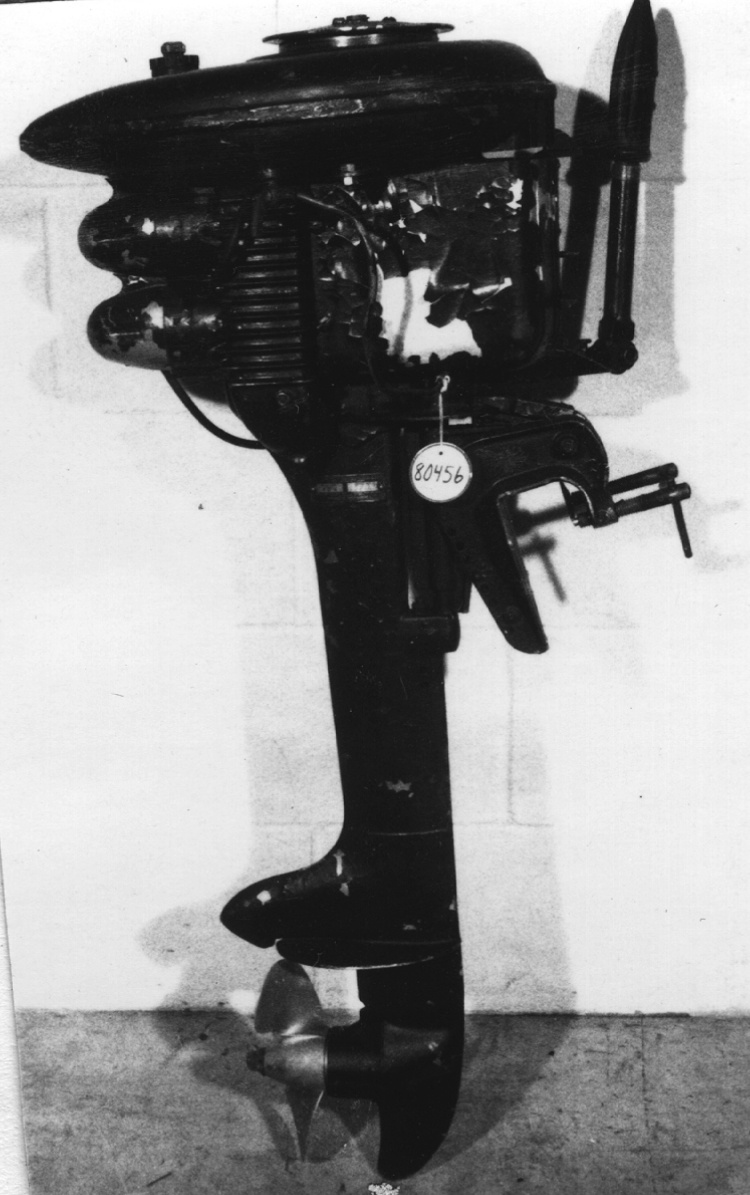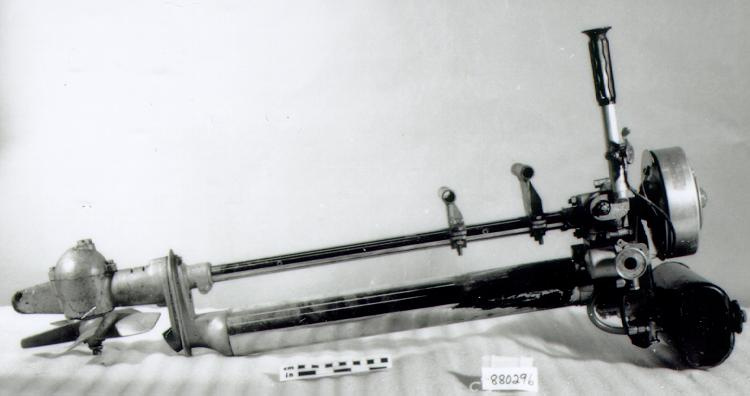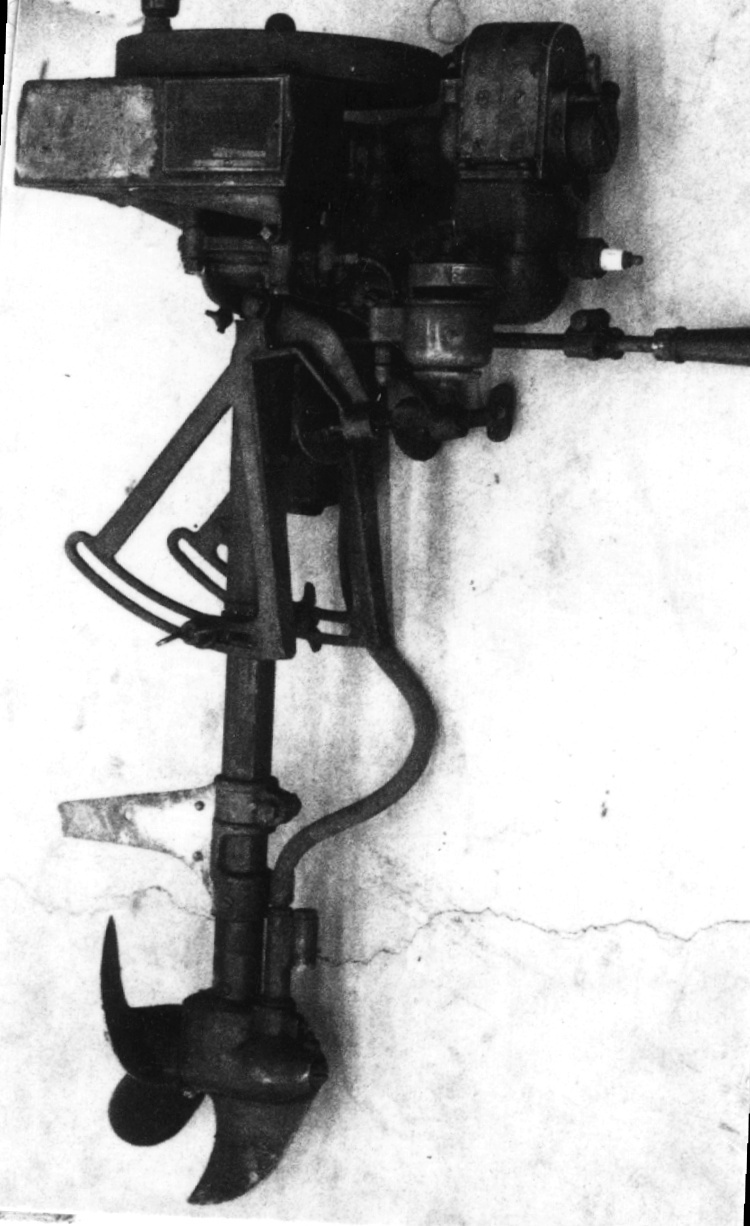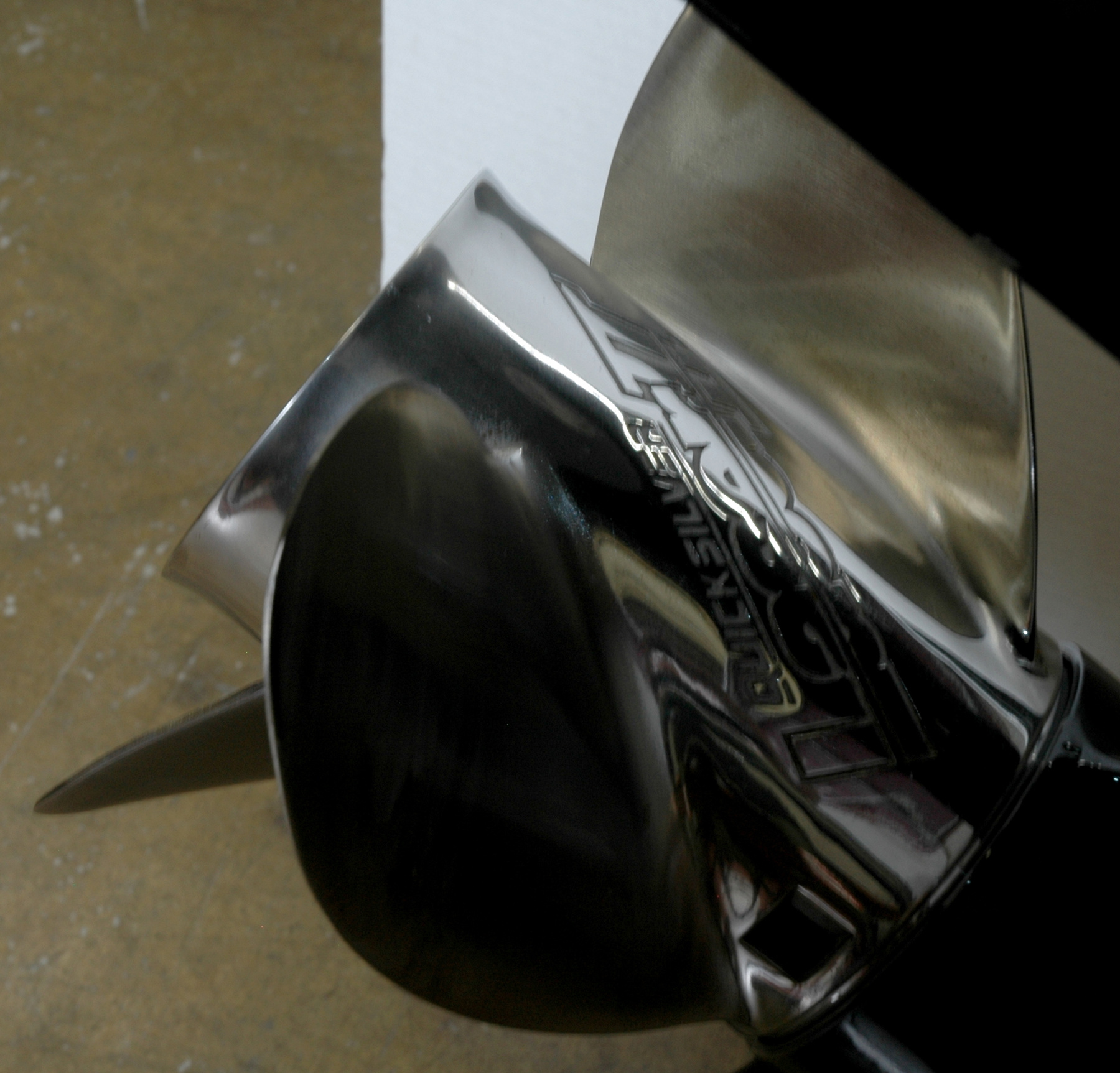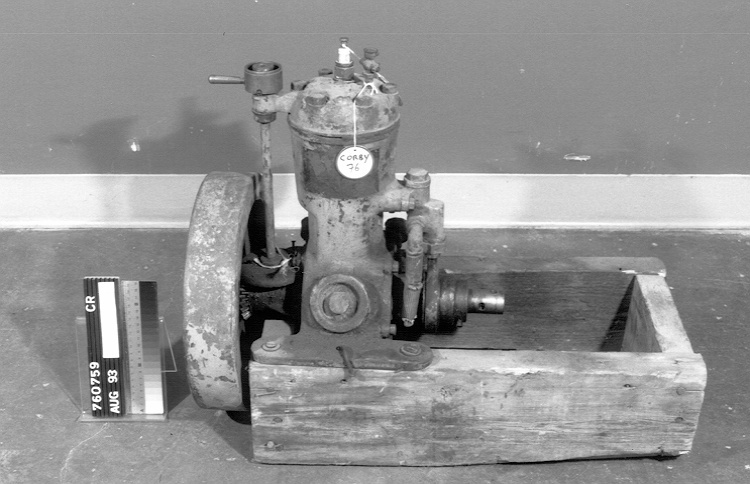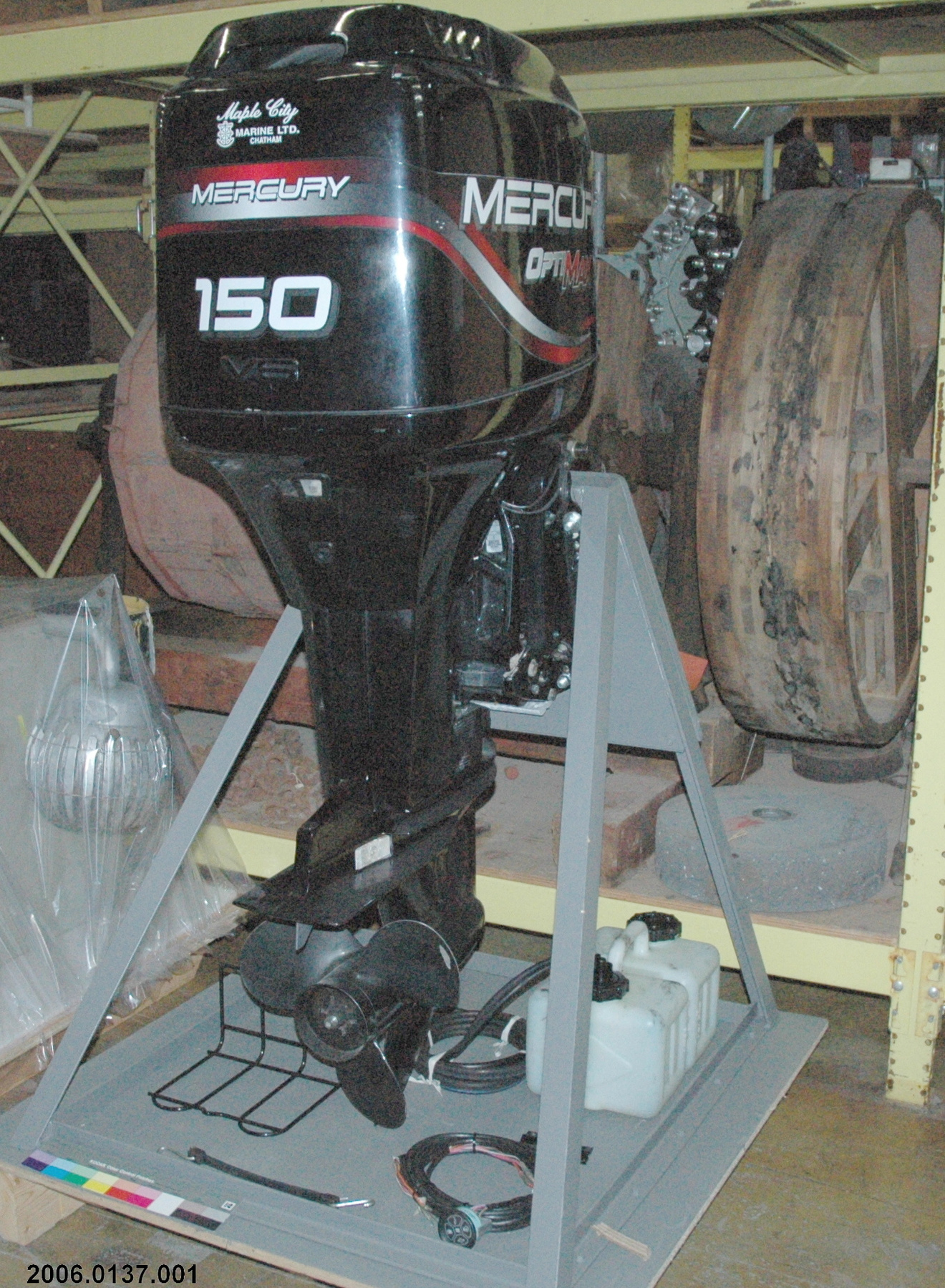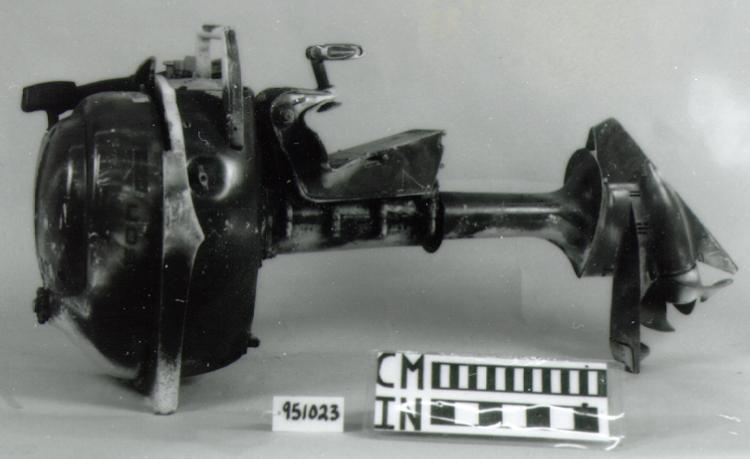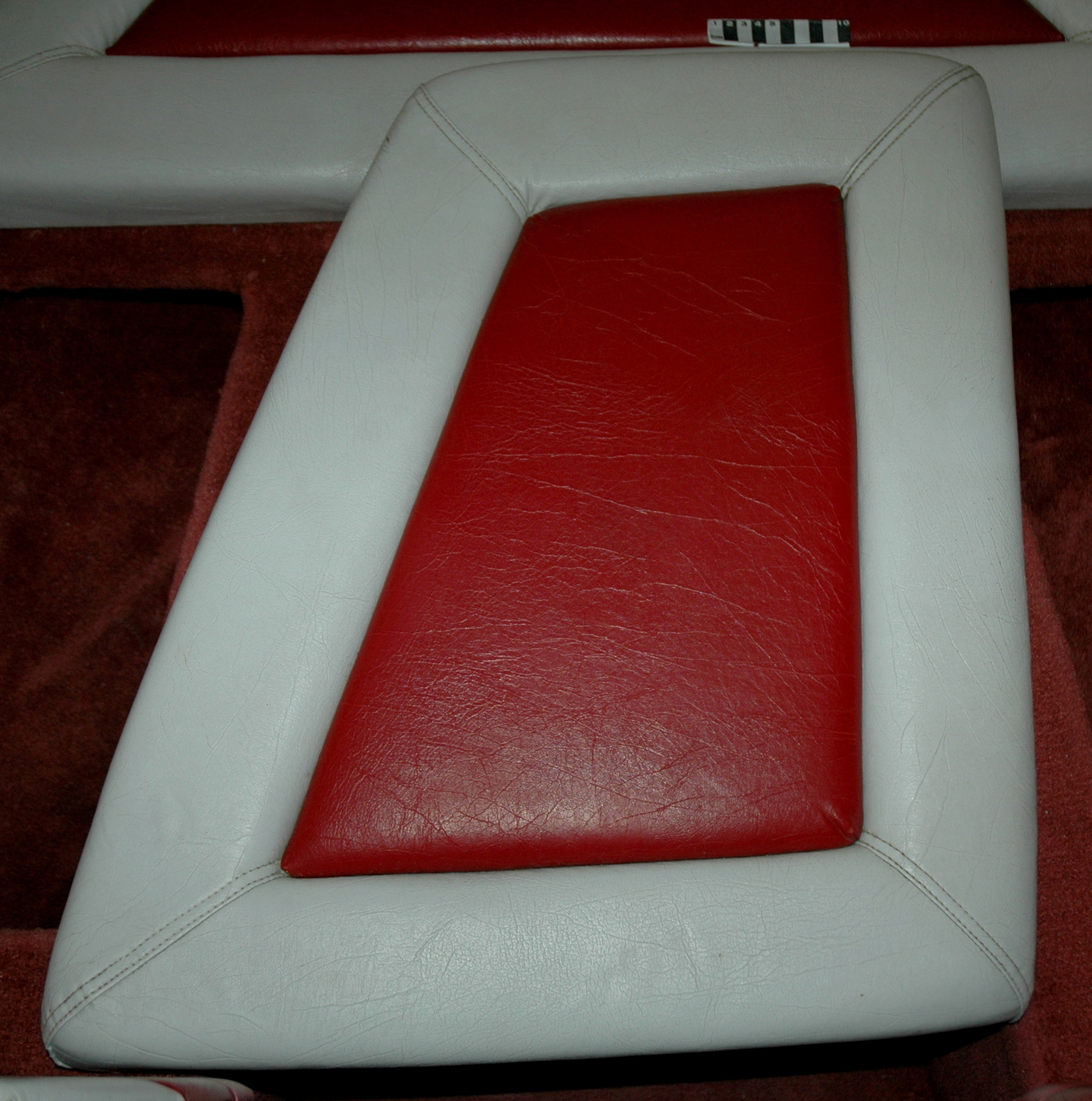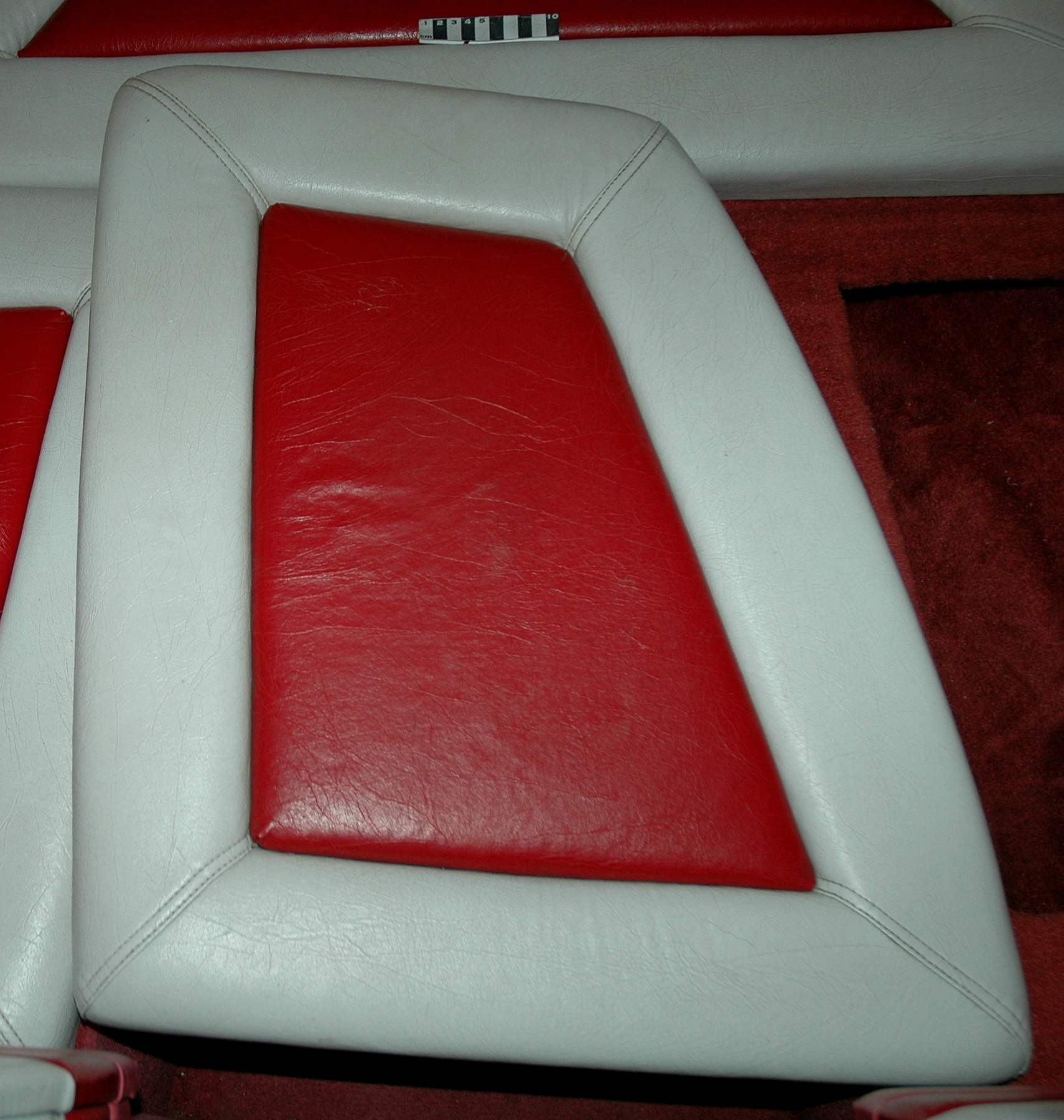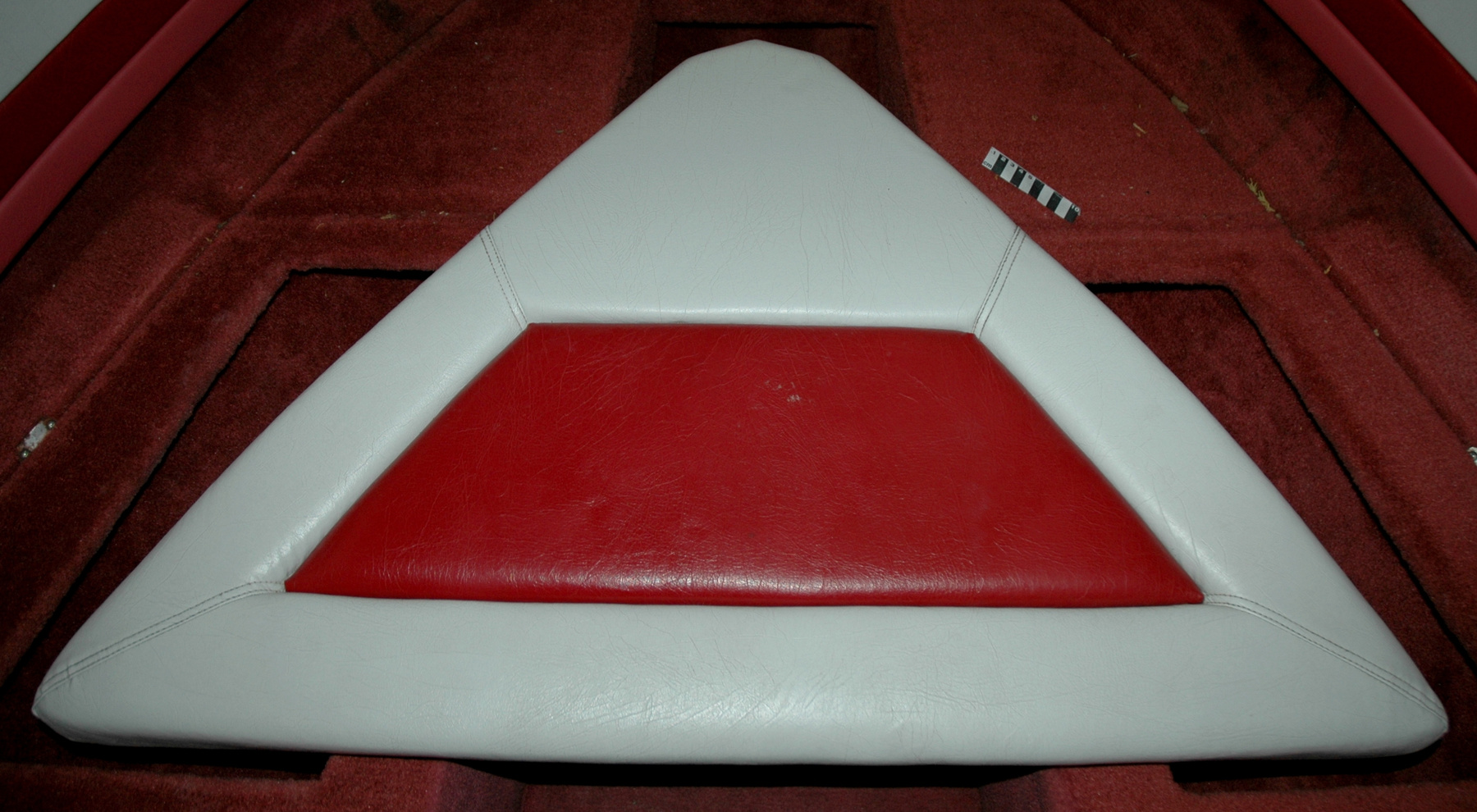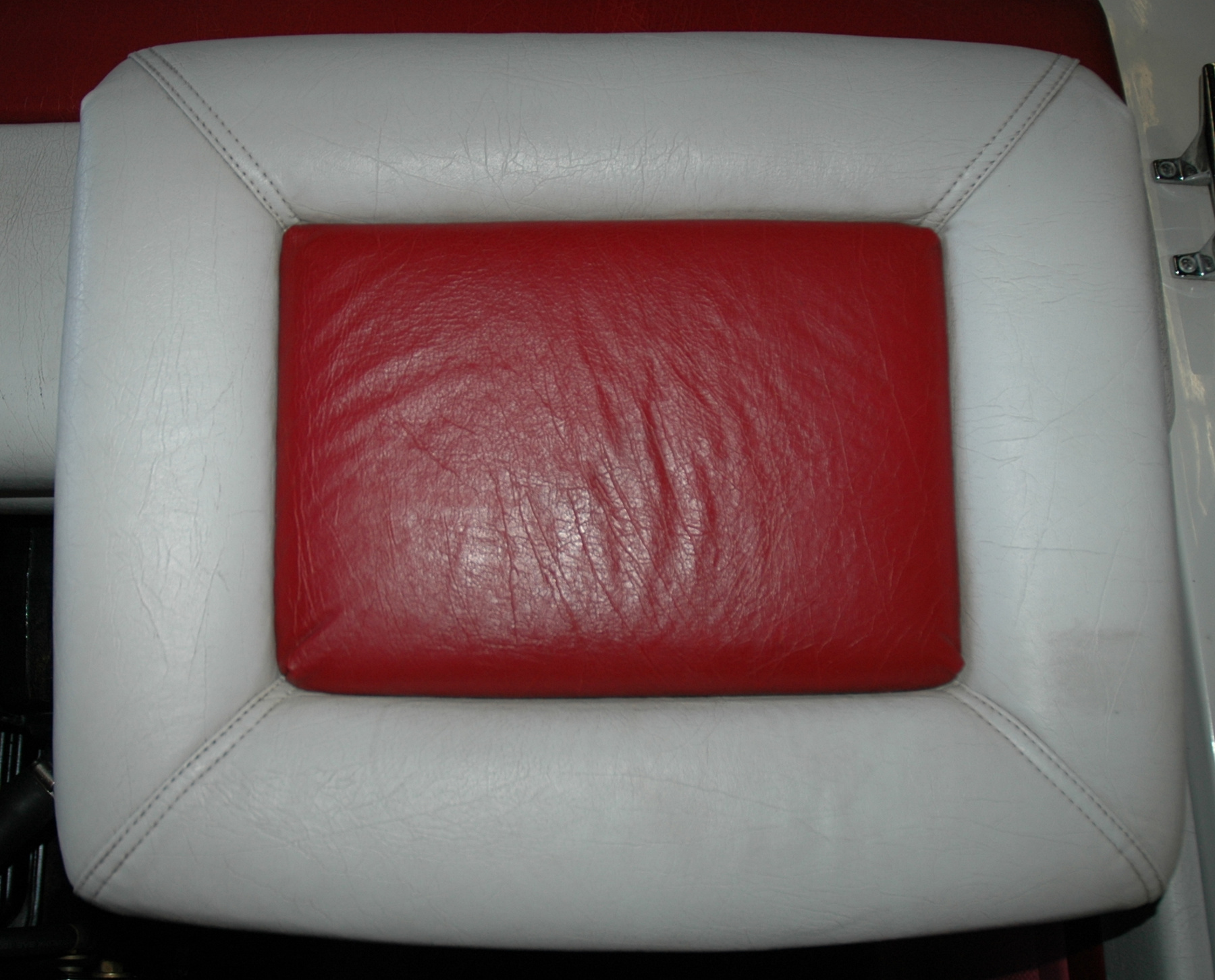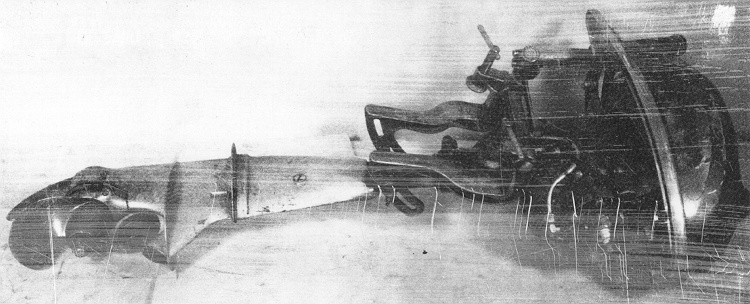Outboard motor
Use this image
Can I reuse this image without permission? Yes
Object images on the Ingenium Collection’s portal have the following Creative Commons license:
Copyright Ingenium / CC BY-NC-ND (Attribution-NonCommercial 4.0 International (CC BY-NC 4.0)
ATTRIBUTE THIS IMAGE
Ingenium,
1971.0001.001
Permalink:
Ingenium is releasing this image under the Creative Commons licensing framework, and encourages downloading and reuse for non-commercial purposes. Please acknowledge Ingenium and cite the artifact number.
DOWNLOAD IMAGEPURCHASE THIS IMAGE
This image is free for non-commercial use.
For commercial use, please consult our Reproduction Fees and contact us to purchase the image.
- OBJECT TYPE
- 2 CYL
- DATE
- 1947
- ARTIFACT NUMBER
- 1971.0001.001
- MANUFACTURER
- Johnson
- MODEL
- TD 20
- LOCATION
- Unknown
More Information
General Information
- Serial #
- 52457
- Part Number
- 1
- Total Parts
- 1
- AKA
- N/A
- Patents
- N/A
- General Description
- METAL
Dimensions
Note: These reflect the general size for storage and are not necessarily representative of the object's true dimensions.
- Length
- 113.0 cm
- Width
- 43.0 cm
- Height
- 27.0 cm
- Thickness
- N/A
- Weight
- N/A
- Diameter
- N/A
- Volume
- N/A
Lexicon
- Group
- Marine Transportation
- Category
- Motive power
- Sub-Category
- N/A
Manufacturer
- AKA
- Johnson
- Country
- Unknown
- State/Province
- Unknown
- City
- Unknown
Context
- Country
- Unknown
- State/Province
- Unknown
- Period
- Unknown
- Canada
-
Johnson Motors Company started as a family-run business. The Johnson brothers crafted their first marine engine in a barn in Terre Haute, IN, in 1908. During the early 1920s, the Peterborough Canoe Company in Ontario had served as the distributor for Johnson Outboards in Eastern Canada. On May 8th, 1928, Canadian Johnson Motor Company Limited established its own location in Peterborough, Ontario. In 1935 the company merged with Evinrude to form Outboard Marine Corporation (OMC). By the late 1950s, around 45% of Peterborough’s production was exported to New Zealand, Venezuela, Hong Kong, England, South Africa, Australia, Belgium, and Nassau. This was done by providing stable employment for over 1200 people at their facility. By 1959, it had expanded to over 400,000 square feet and provided employment to 1,600 people. The company changed its name to Outboard, Marine & Manufacturing Co. (OMMC) Canada before it was dissolved in 1982. C.B. Clarence Neal played a significant role in the great success of OMMC. His strong leadership and new product initiatives were instrumental in establishing OMMC’s sustained dominance in the Canadian market for many years. La compagnie Johnson Motors a commencé comme une entreprise familiale. Les frères Johnson ont fabriqué leur premier moteur marine à Terre Haute en Indiana en 1908. Au début des années 1920s, la compagnie Johnson a décidé d'utiliser la Compagnie de Canoë Peterborough comme centre de distribution pour leurs moteurs hors-bord pour le marché de l'est du Canada. Le 8 Mai, 1928 la compagnie nommée Canadian Johnson Motor Company Limited a établi sa propre usine à Peterborough. En 1935 la compagnie Outboard marine Corporation (OMC) a acheté la compagnie et à aussi fait une fusion d'entreprises avec Evinrude. Rendu à la fin des années 1950 presque 45 % de la production de l'usine à Peterborough était exporté à plusieurs endroits au monde. Plus de 1200 personnes travaillaient pour exporter des moteurs hors-bord à des pays comme la Nouvelle Zélande, l'Australie, l'Afrique du sud, l'Angleterre, le Venezuela, la Belgique, le Hong Kong et aussi le Nassau. Rendu en 1959 la compagnie avait grossit a plus de 1600 employées avec une usine qui a augmenté jusqu'à 400,000 pieds carrés. La compagnie a changé son nom a Outboard, Marine & Manufacturing Co. (OMMC) Canada avant de fermer ces portes en 1982. C.B. Clarence Neal a grandement contribué au succès du OMMC avec ses initiatives pour la publicité de nouveaux produits ainsi que son leadership. Ces qualités ont permis à OMMC de dominer le marché canadien pour plusieurs années. - Function
-
This artifact functions as a small internal combustion 2-cylinder 5.0 Horsepower engine. This artifact can be attached to the stern of a small boat. Cet artefact est conçu pour être attaché à la poupe d'un petit bateau. L'objet est un moteur à combustible qui a deux cylindres avec une Puissance de 5.0. - Technical
-
This 1947 Johnson outboard motor was made for freshwater and has a horsepower of 5.0. This is a 2-cylindar model that weighs 44 pounds. The motor has pistons that have a displacement of 8.84 cubic inches; the bore width measures 1.94 inches, while the stroke length is 1.50 inches. This engine has power steering and a recoil type starter. In 1922, the Johnson brothers turned their attention to a small two-cylinder air-cooled motor, which they modified for use as a bicycle helper engine; these motorized bicycle attachments became known as Johnson Motor Wheels. Lou Johnson repurposed some of the Motor Wheel’s engine for a new invention: an outboard motor, and the result was a water-cooled 2-cylinder outboard weighing only 35lbs, significantly lighter than the bulky row boat motors of that time. The Johnson Waterbug or Light Twin introduced several groundbreaking features; notably, it incorporated a reliable flywheel magneto from the Quick Action Magneto Co. in South Bend, Indiana. The Waterbug also introduced other practical features. Improvements such as a motor that could swivel a full 360 degrees to increase maneuverability as well as the option to tilt the motor up when beaching or in shallow water served to attract many consumers. It also has another innovative feature: The use of a rope for starting the motor, setting a trend among competitors who used cumbersome knobs or straps. Ce moteur hors-bord Johnson était fabriqué en 1947 et a une Puissance de 5.0 et il est conçu pour l'eau douce. Le moteur à deux cylindres et pèse 44 livres. Le moteur à une direction assistée et un démarreur à rappel. Les pistons ont un déplacement de 8.84 pouces et le diamètre de fût est 1.94 pouces pendant que la longueur de course est de 1.50 pouces. En 1922 les frères Johnson ont modifié un moteur à deux cylindres refroidis à l'air pour fonctionner comme un moteur à aide bicycle. Ces attachements motorisés pour bicyclette ont été nommées Johnson Motor Wheels par leur compagnie. Lou Johnson a adapté la technologie de ces moteurs pour une nouvelle invention : le moteur hors-bord. Le Johnson Waterbug ou Light Twin à introduite plusieurs options révolutionnaires très attirante aux consommateurs comme un volant de moteur magnéto fabriquée par la compagnie Quick Action Magneto Co. en Indiana. Le Waterbug avait aussi une autre innovation, don l'utilisation d'un démarrage à cordes. Cette innovation à révolutionner les moteurs hors-bord qui précédemment utilisait des sangles ou des manches plus encombrantes. D'autres aspects comme un moteur qui pouvait pivoter à 360 degrés ou qui pouvait être incliné vers le haut dans de l'eau peu profond servait pour augmenter la manœuvrabilité de leur produit ainsi que pour attirer encore plus de consommateurs. - Area Notes
-
Unknown
Details
- Markings
- N/A
- Missing
- N/A
- Finish
- Unknown
- Decoration
- N/A
CITE THIS OBJECT
If you choose to share our information about this collection object, please cite:
Johnson, Outboard motor, circa 1947, Artifact no. 1971.0001, Ingenium – Canada’s Museums of Science and Innovation, http://collections.ingeniumcanada.org/en/id/1971.0001.001/
FEEDBACK
Submit a question or comment about this artifact.
More Like This
